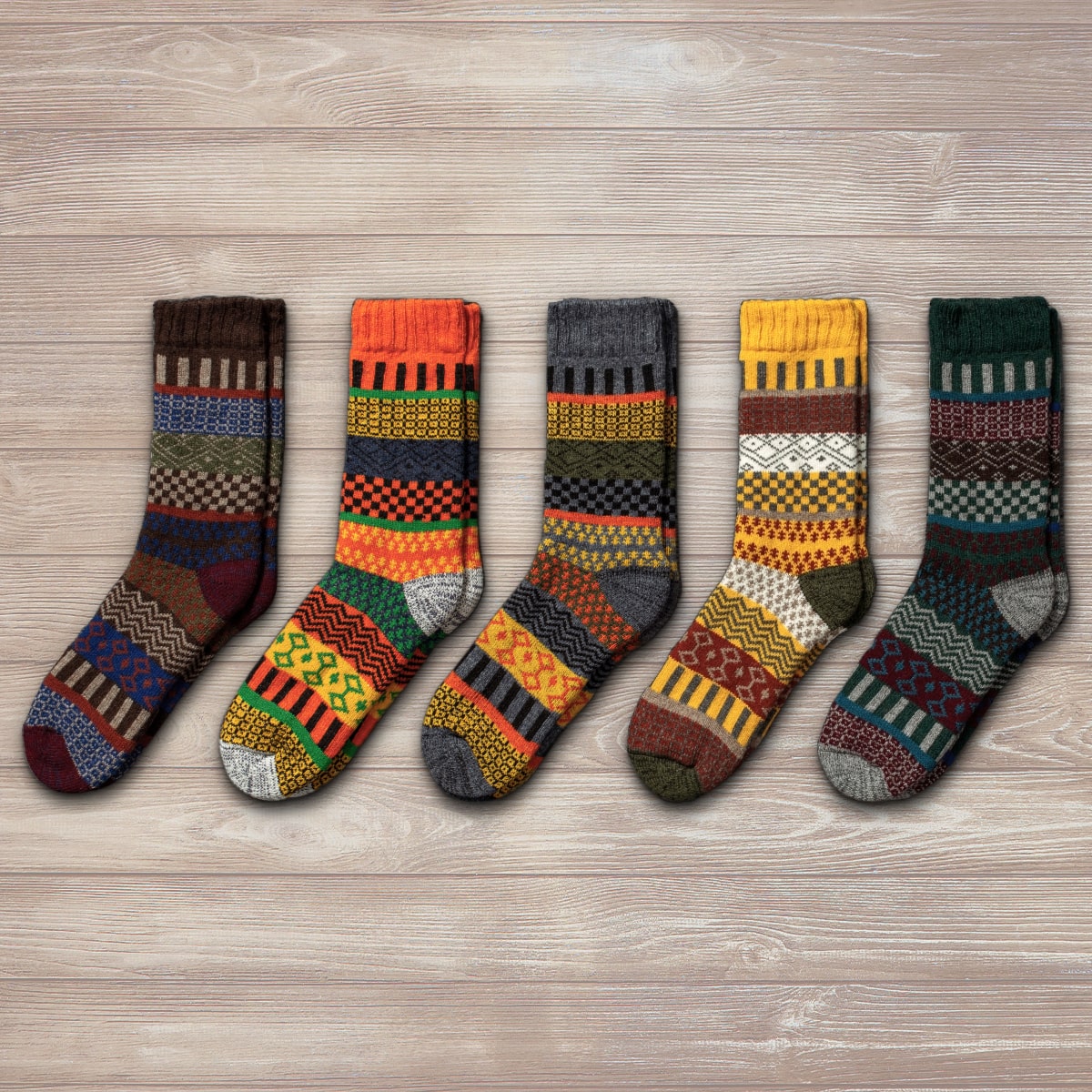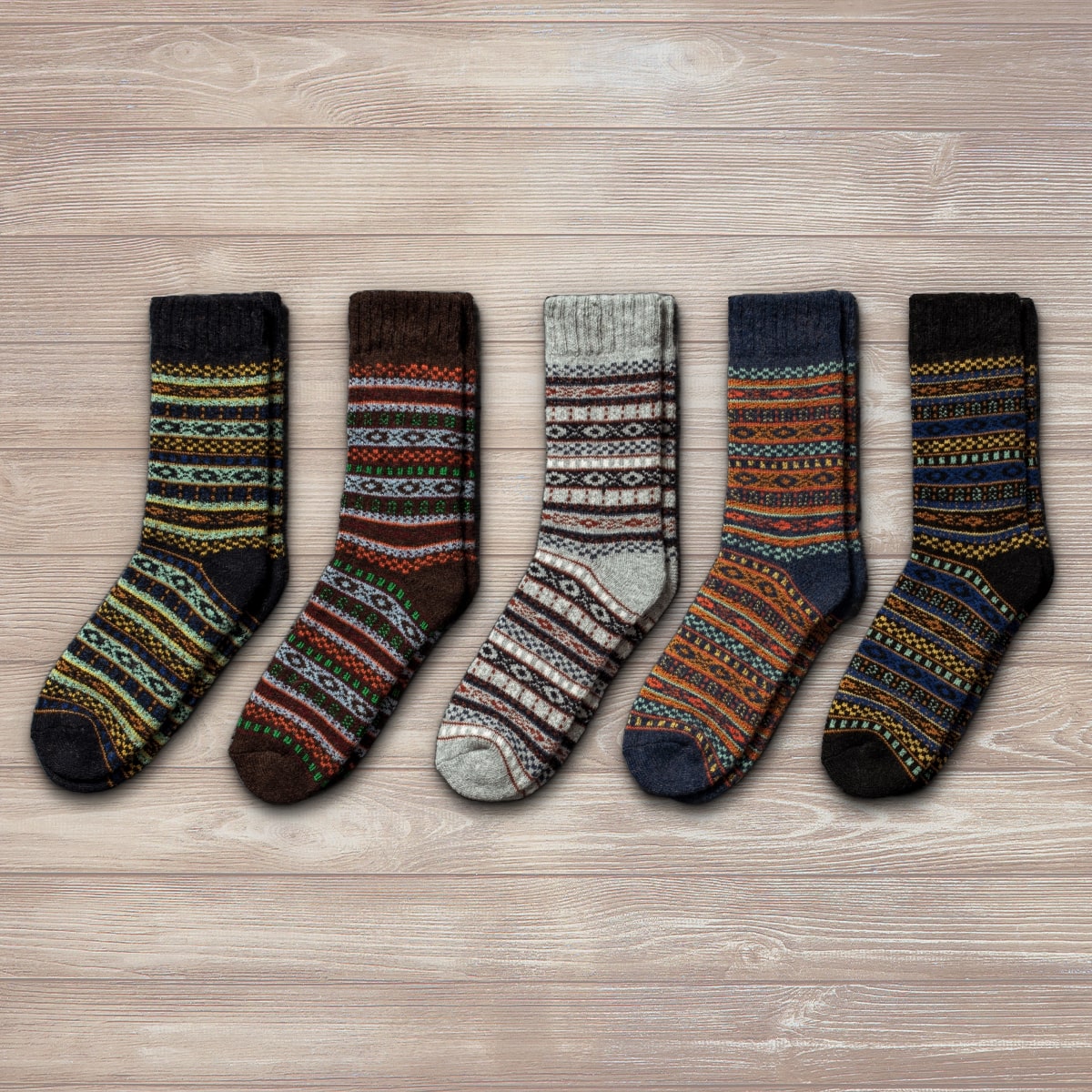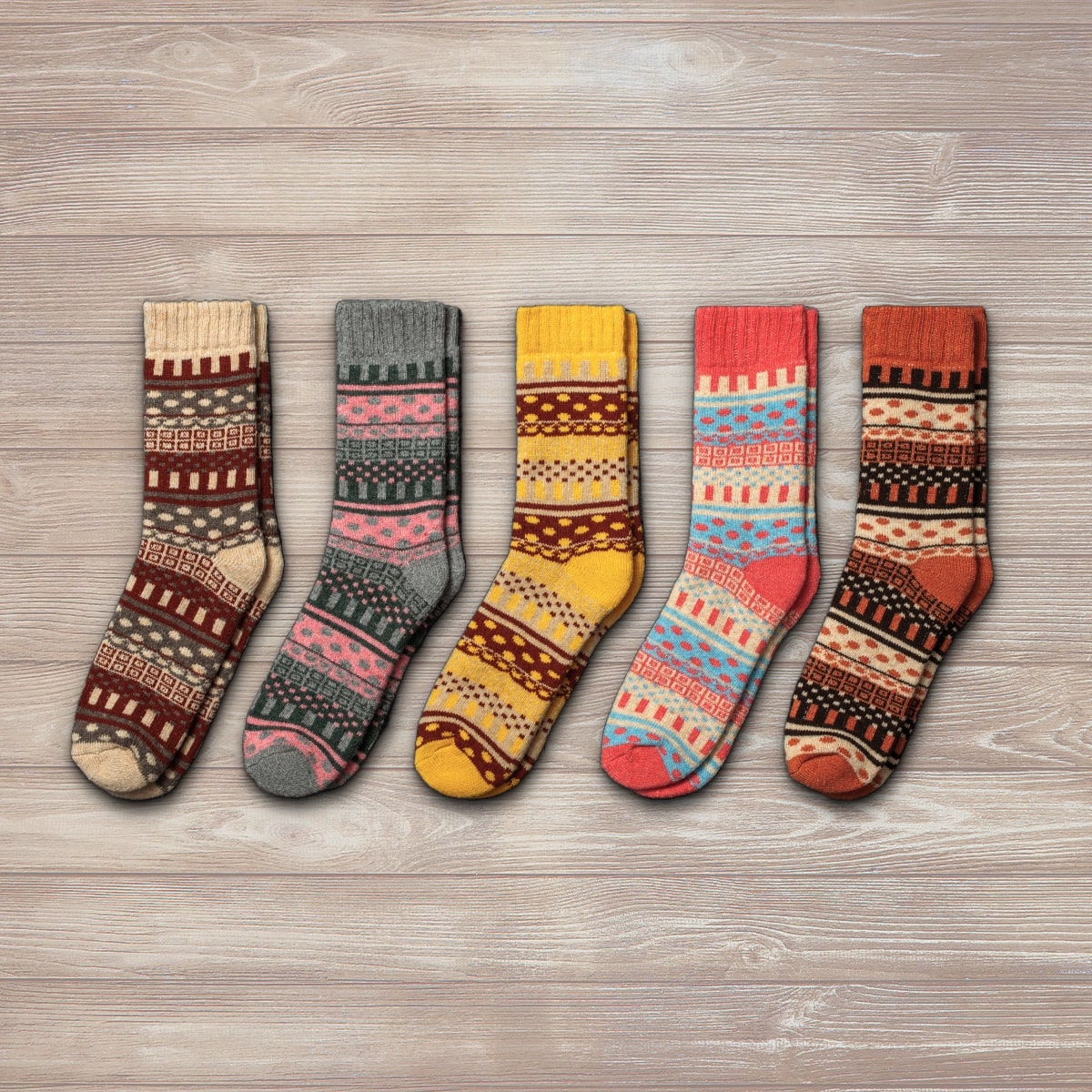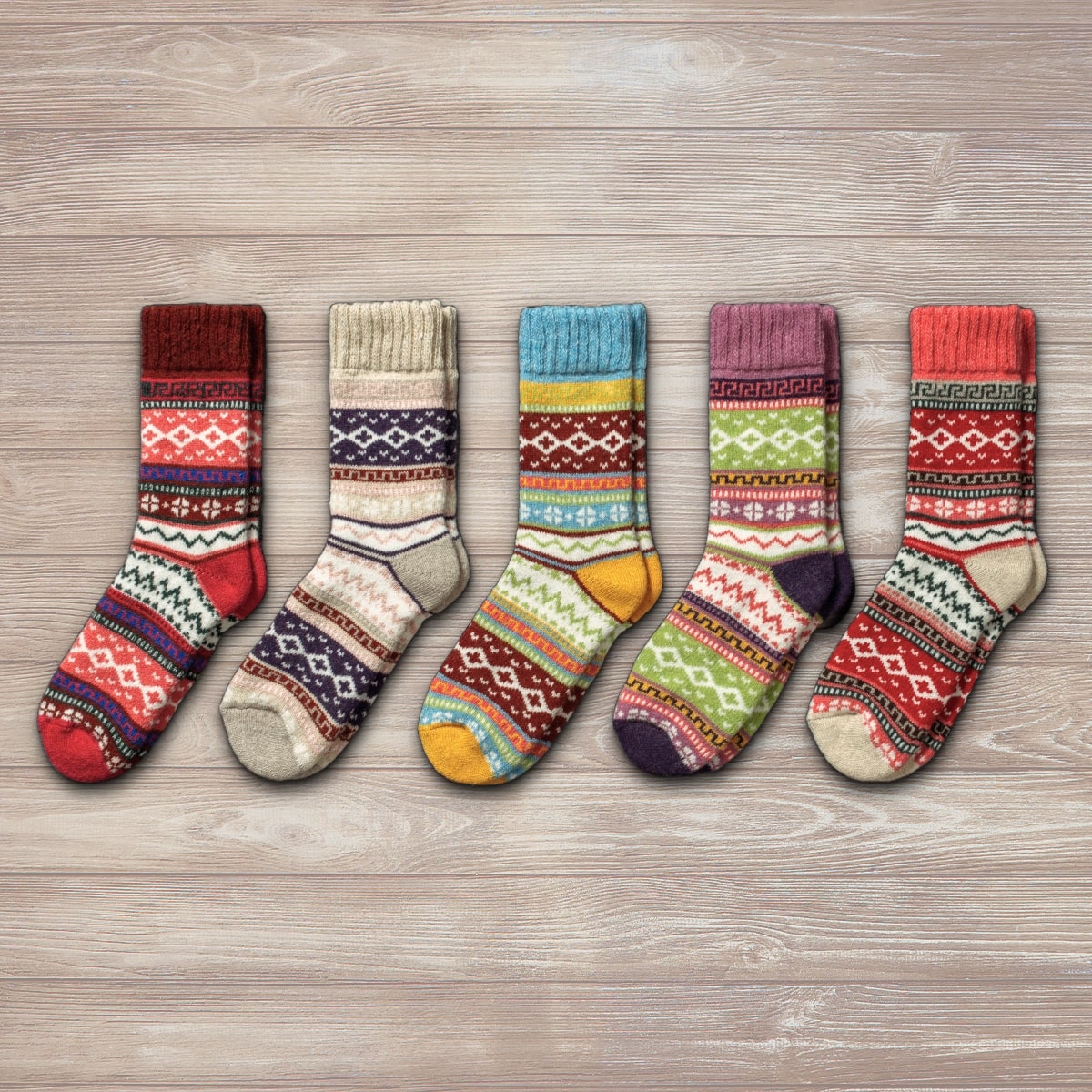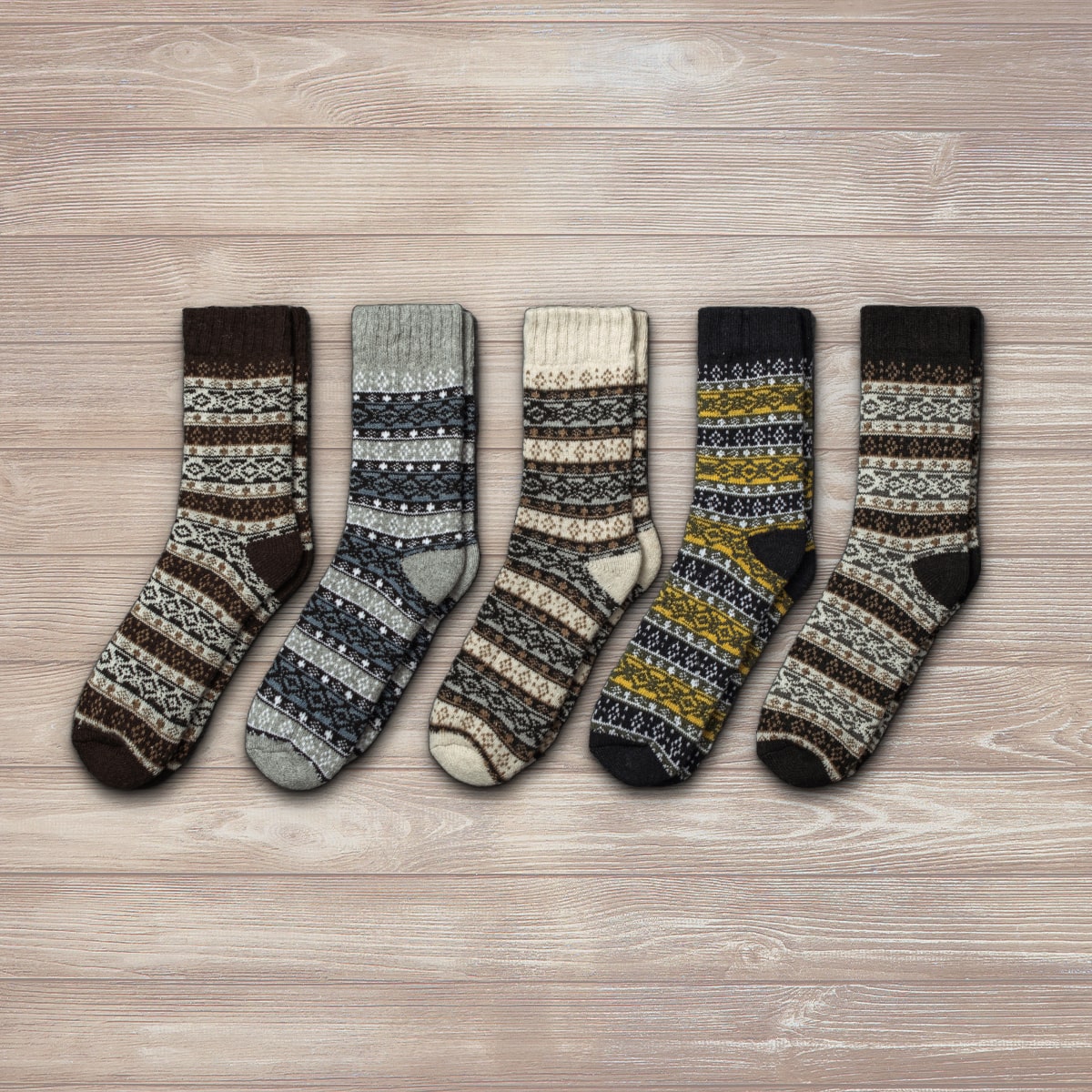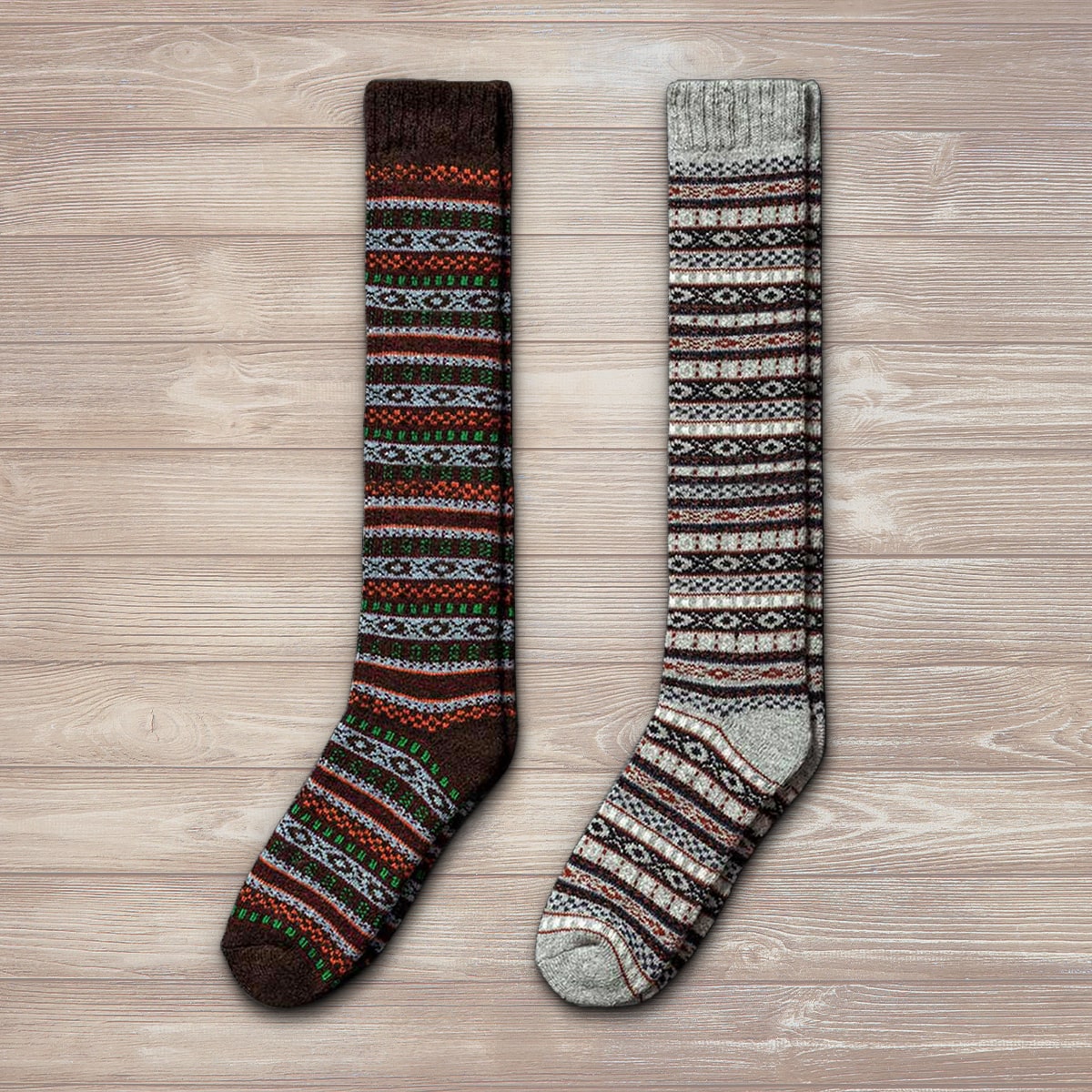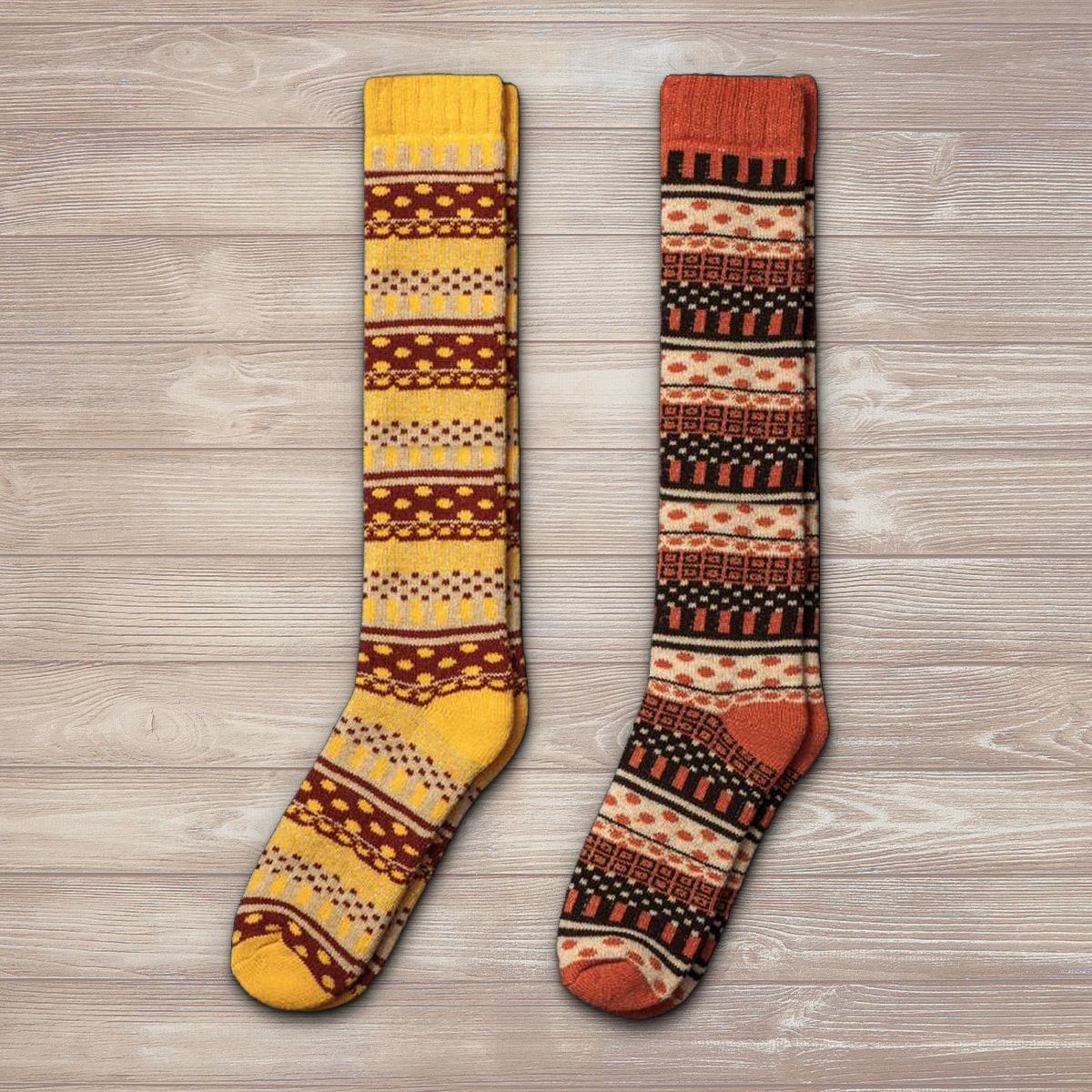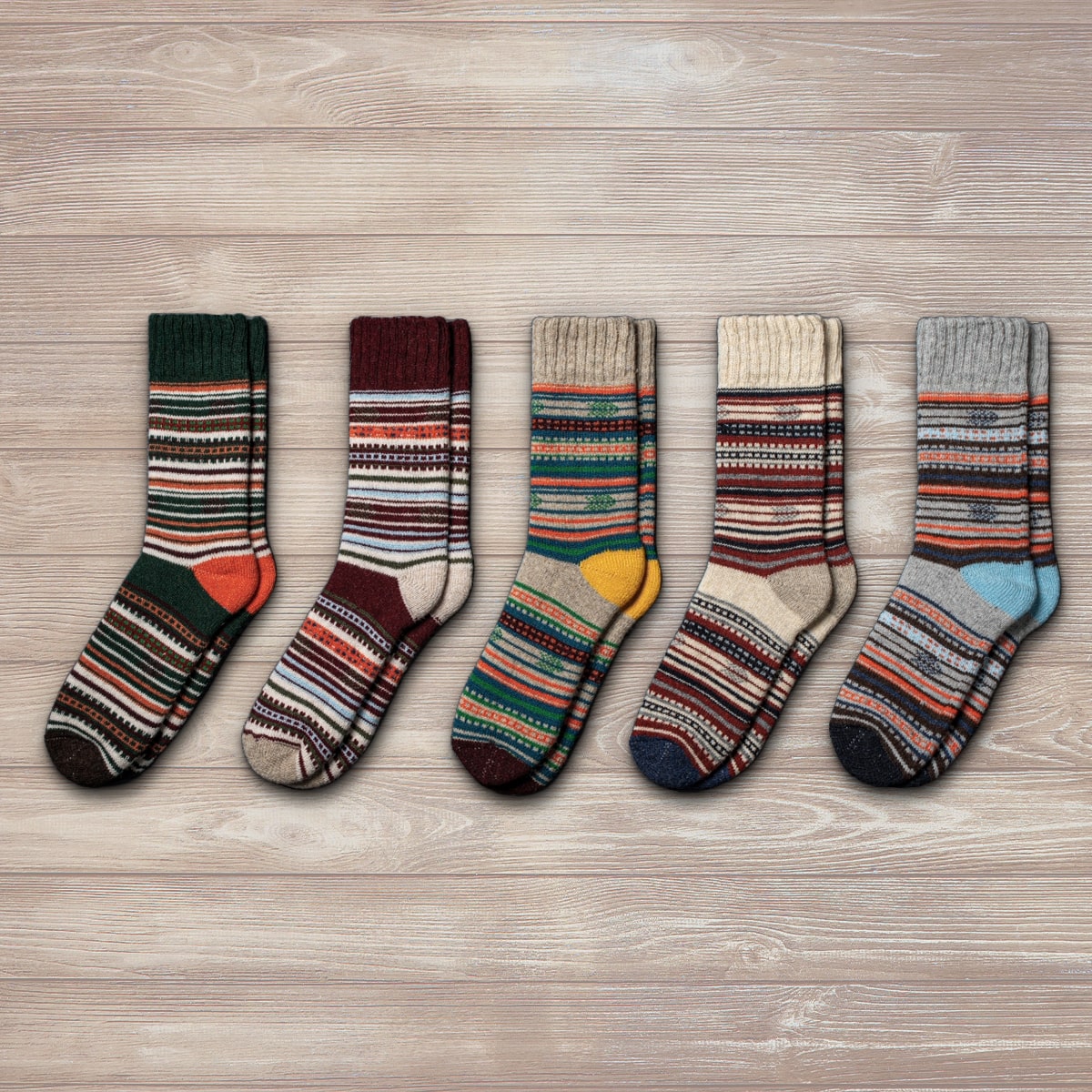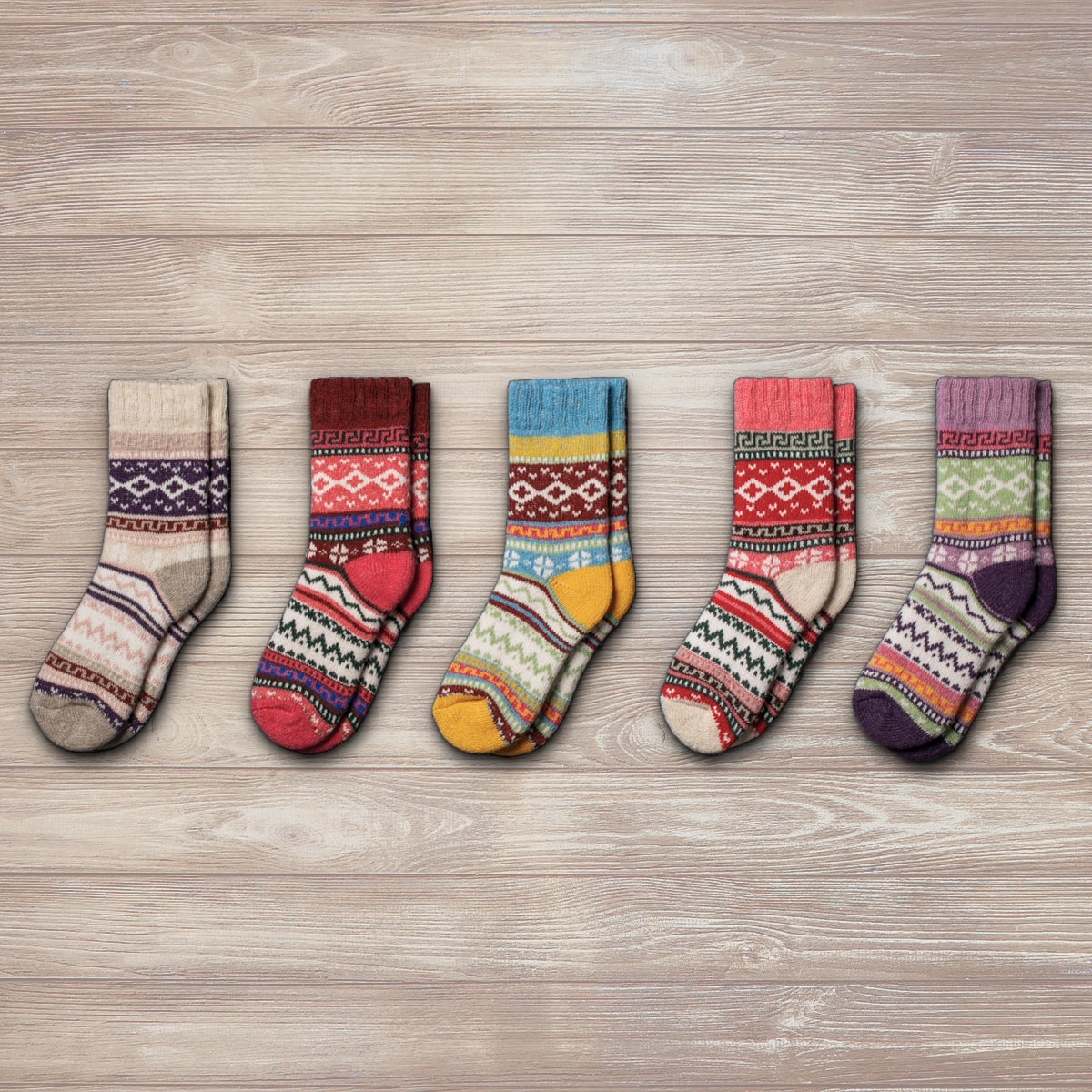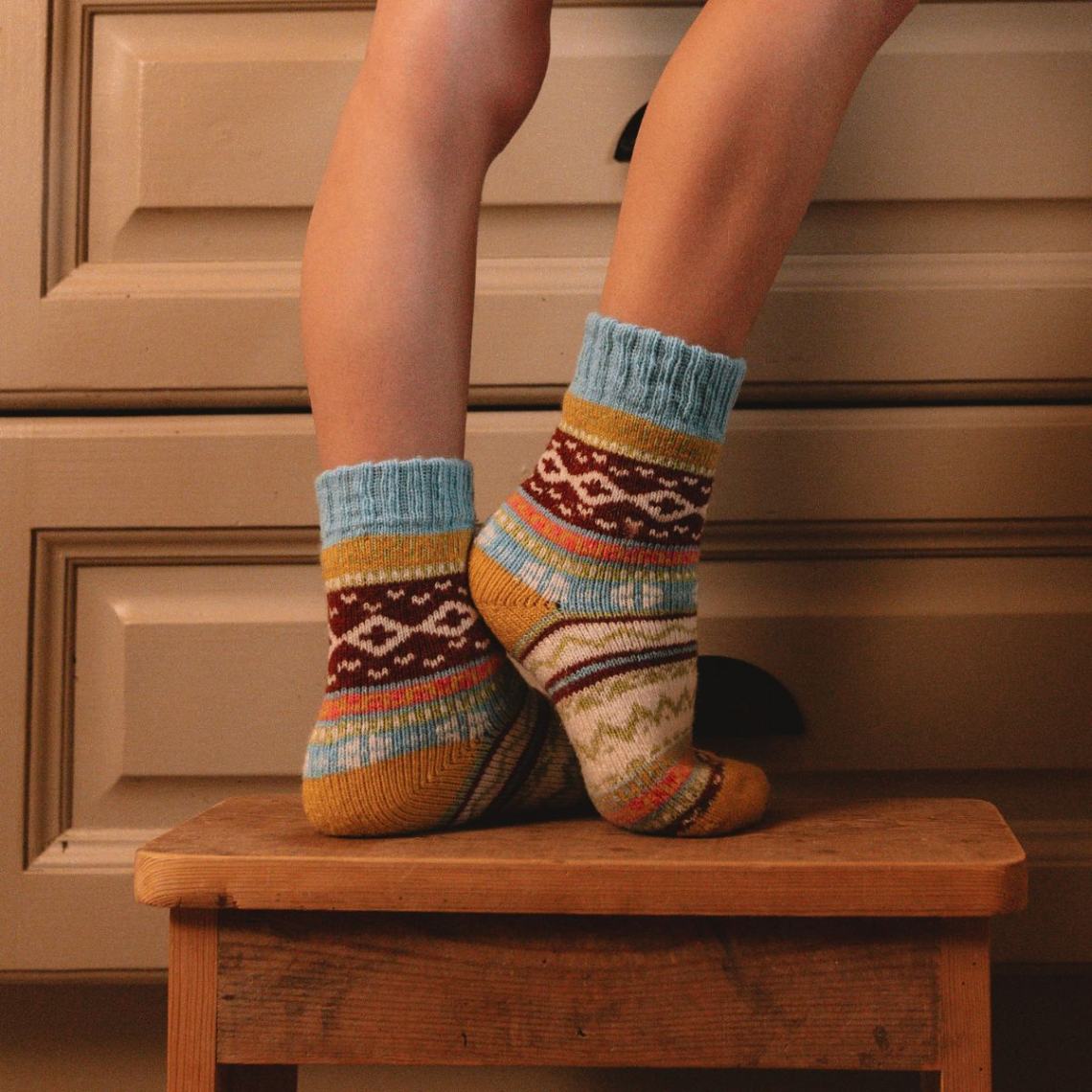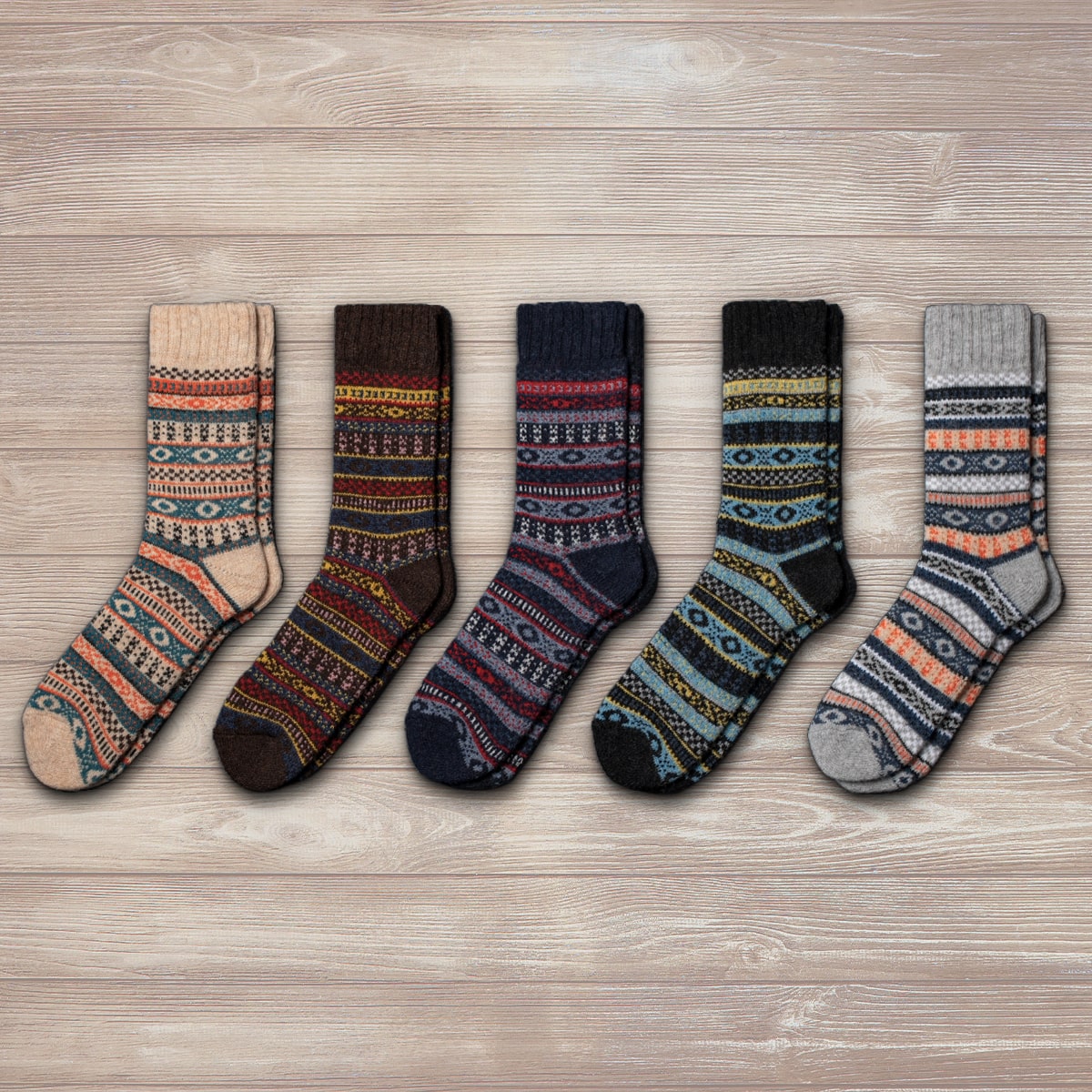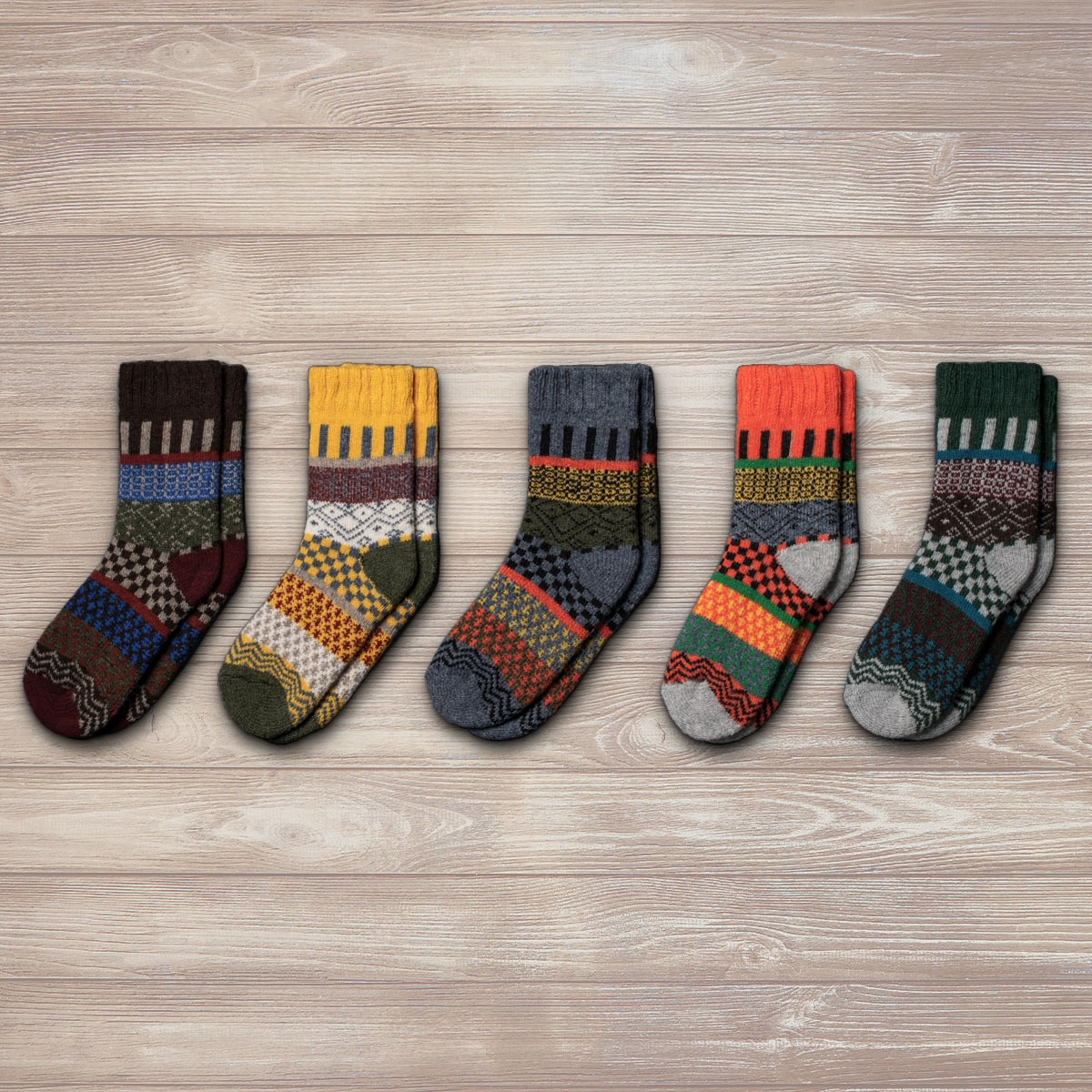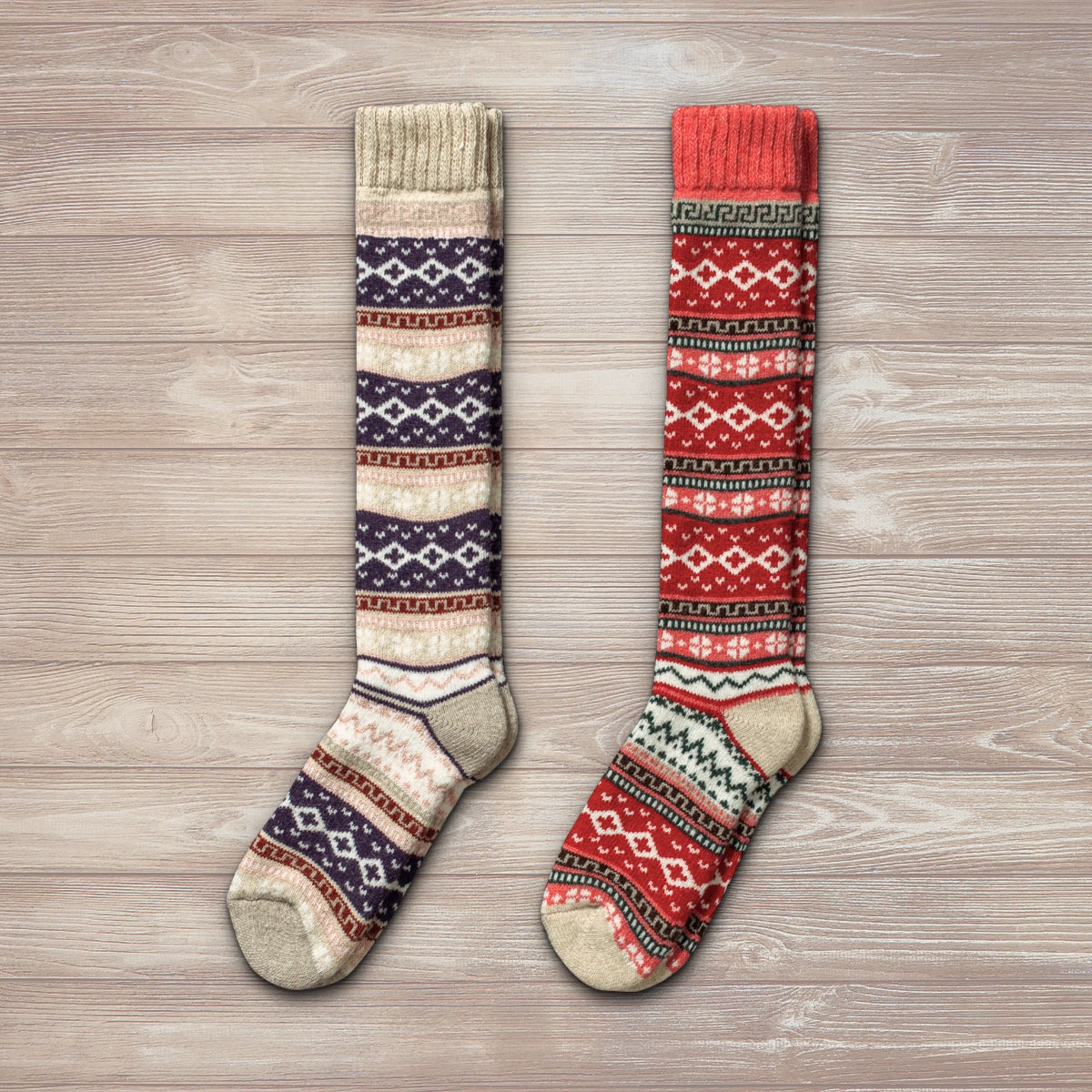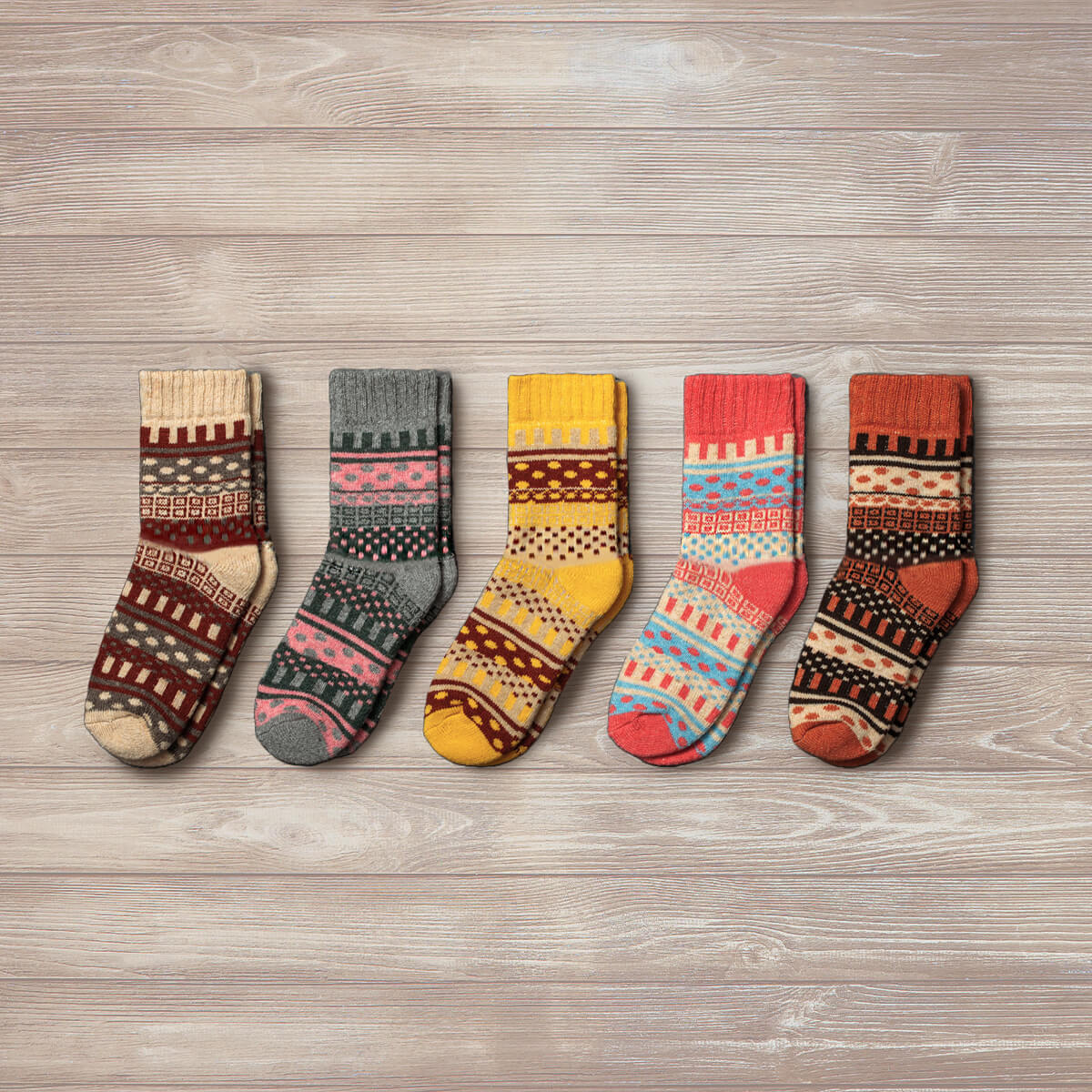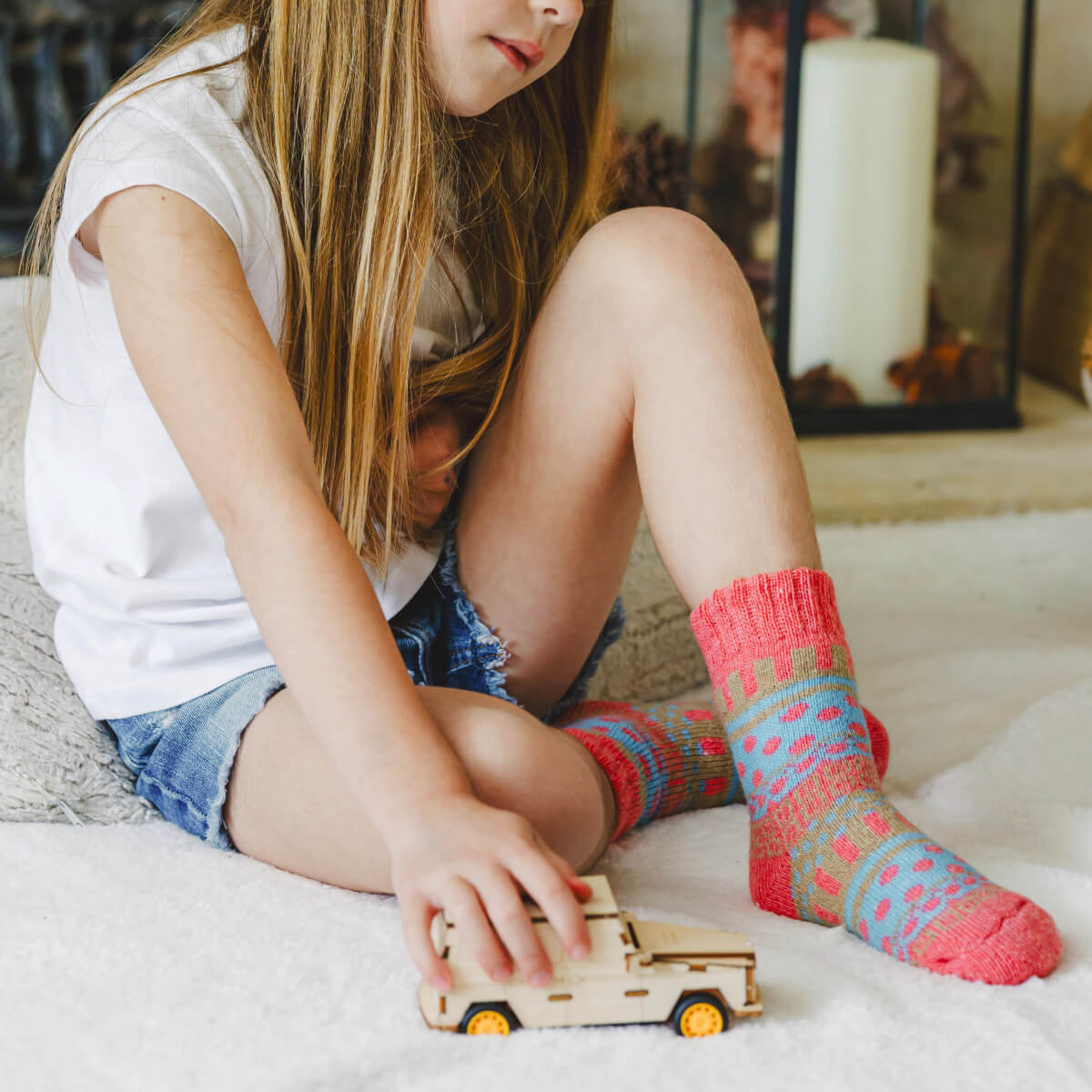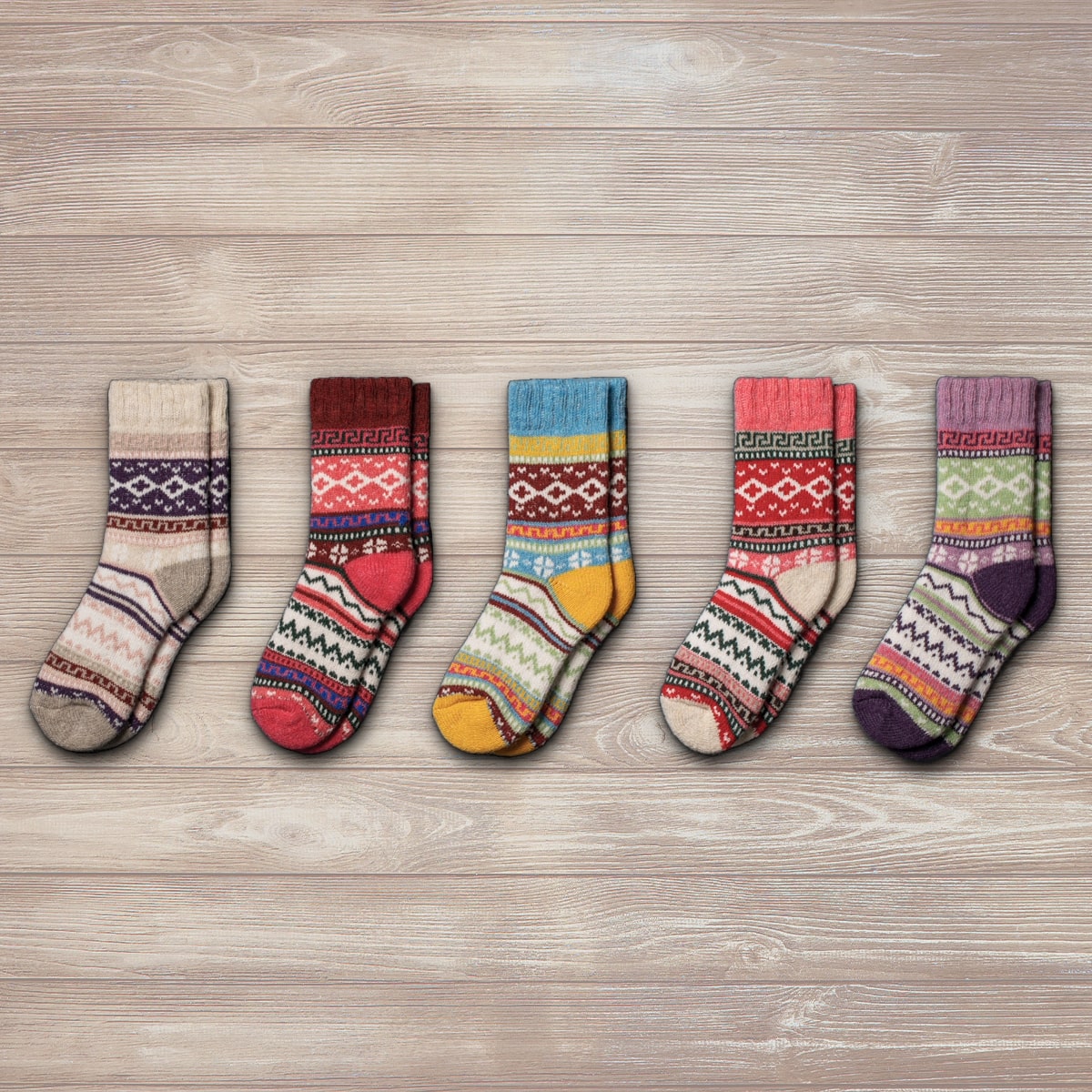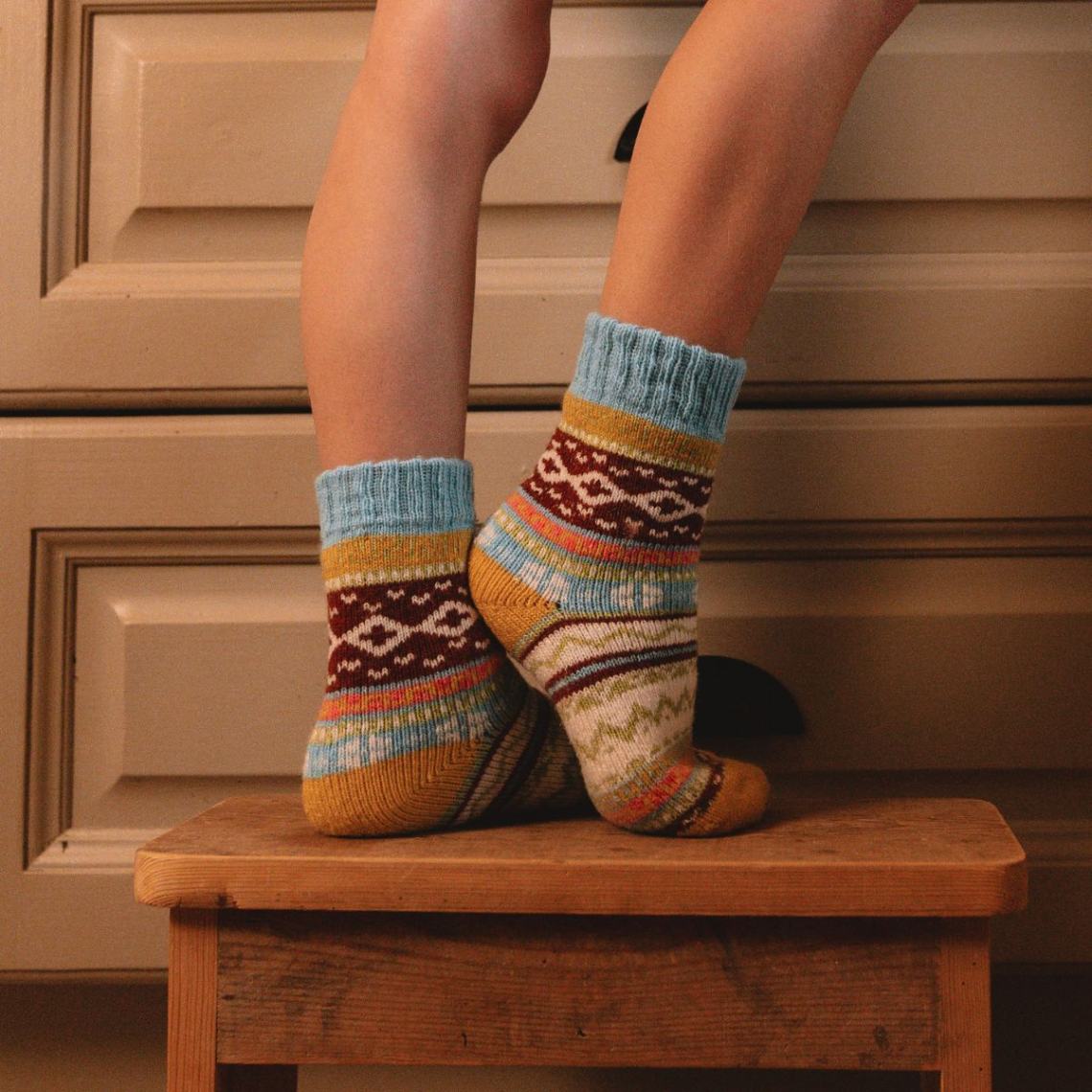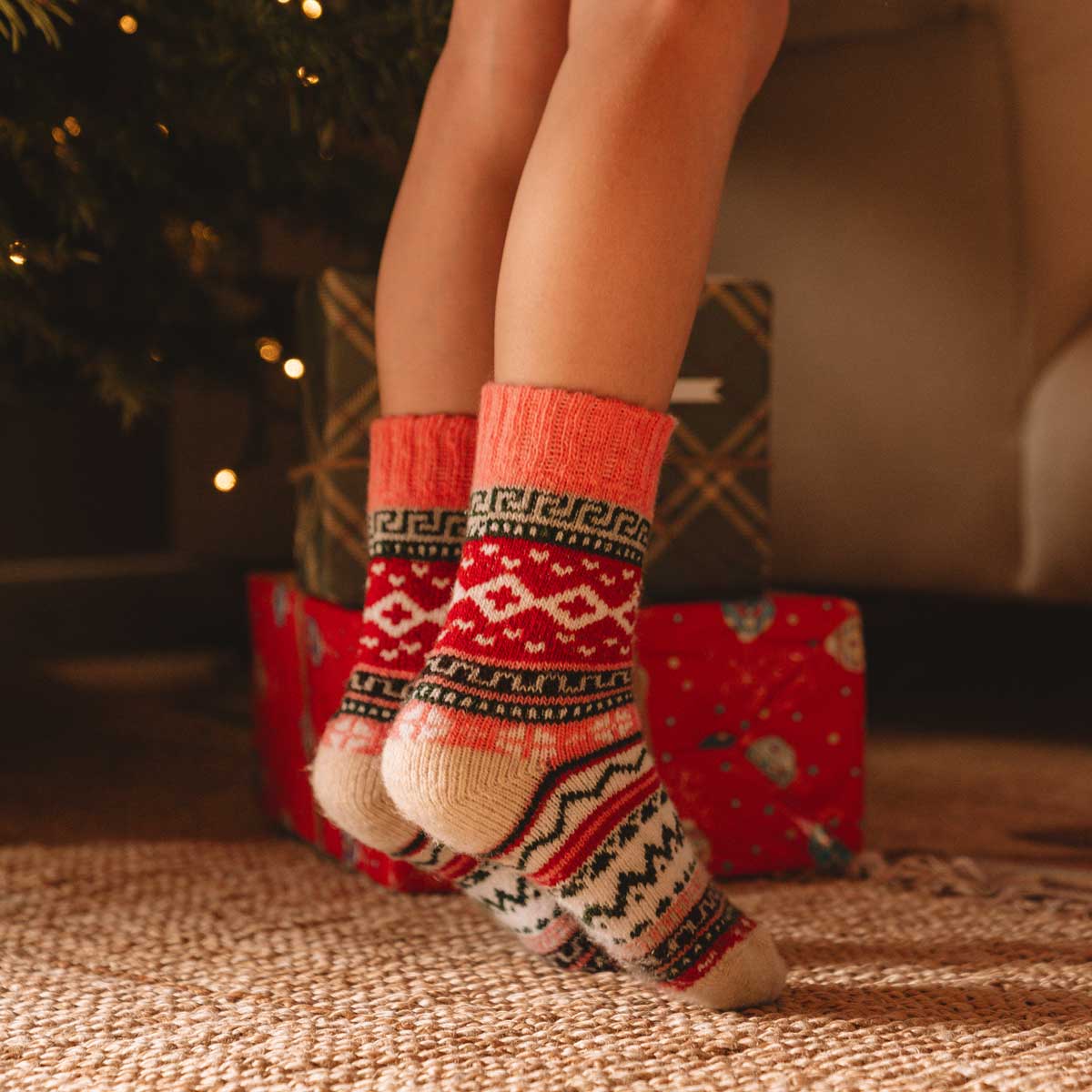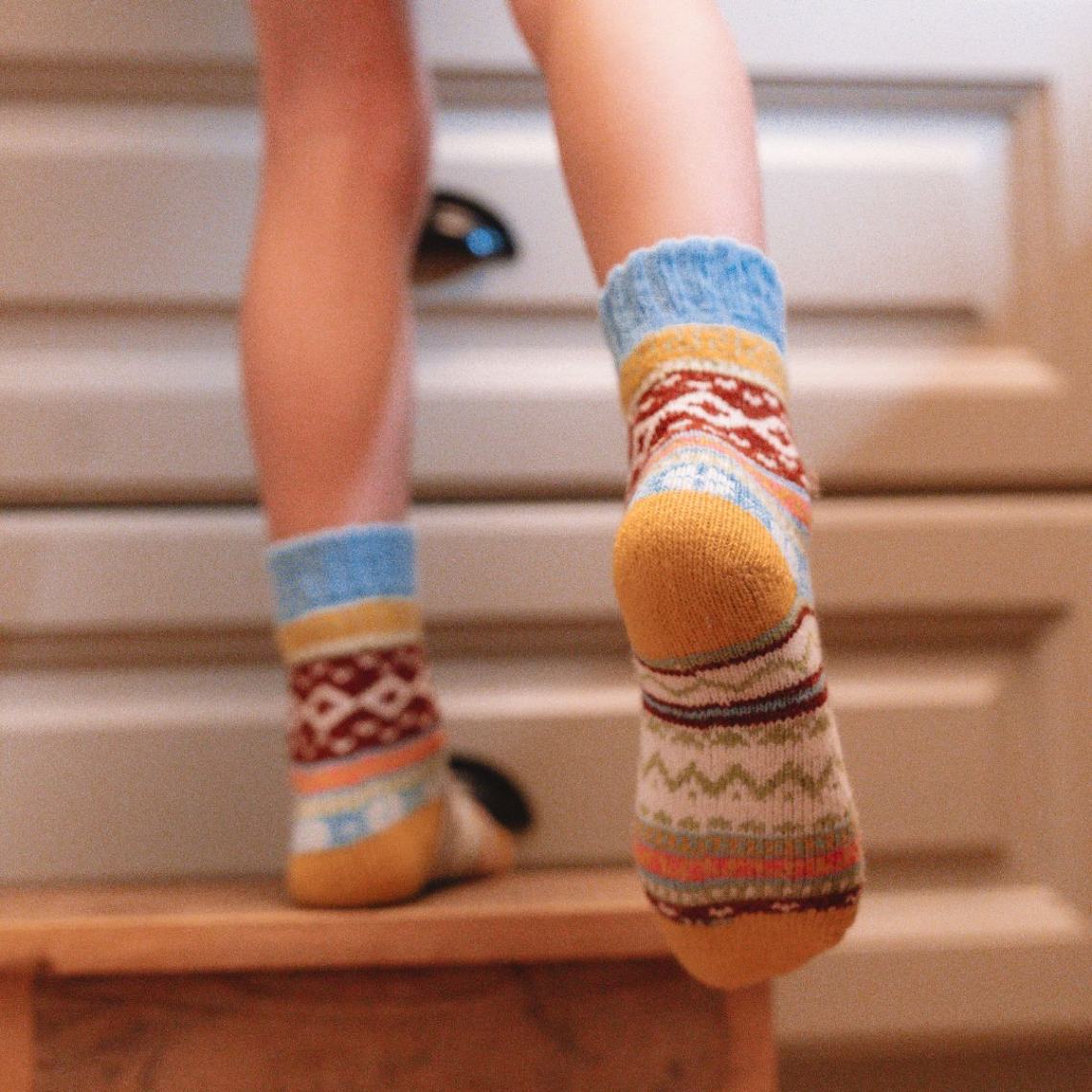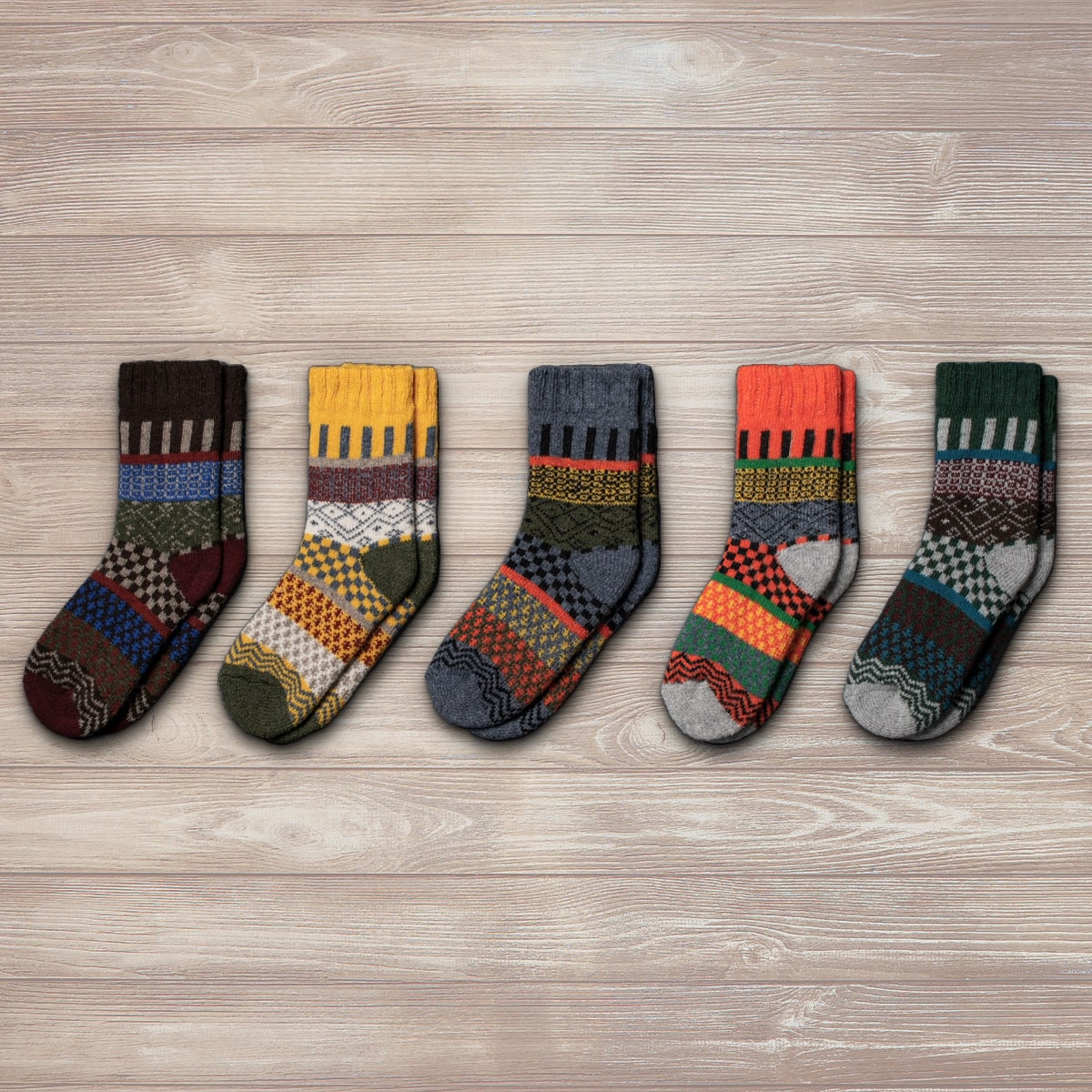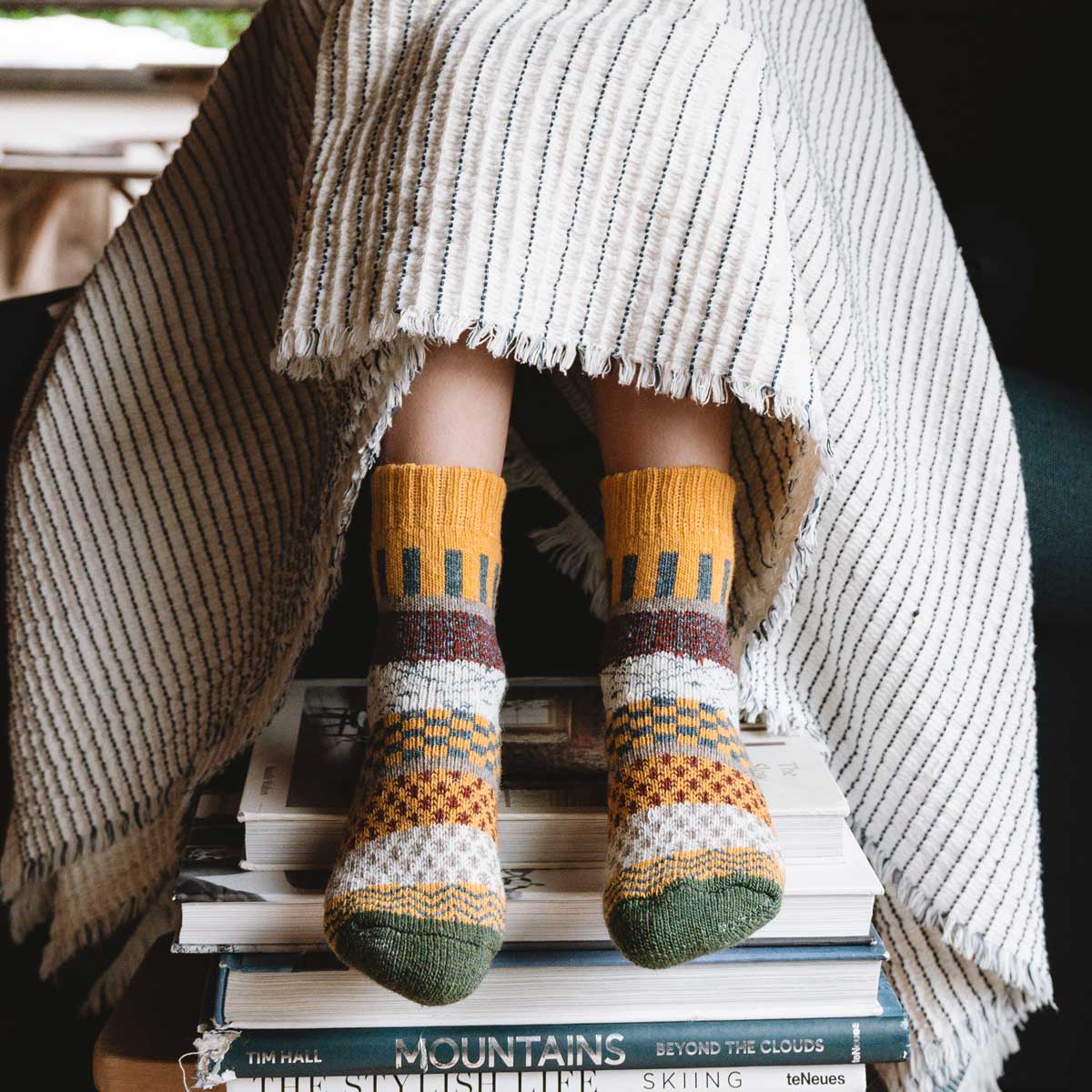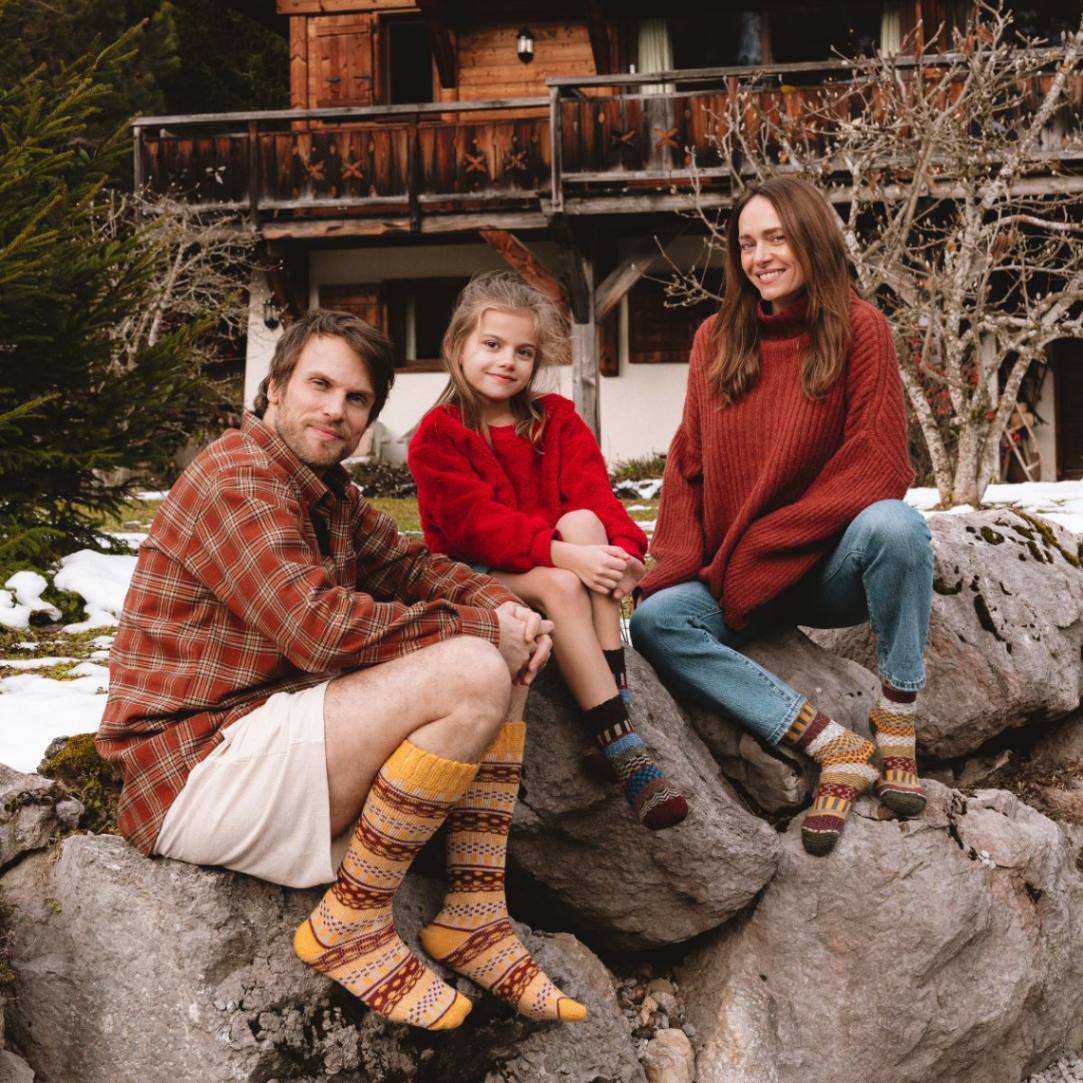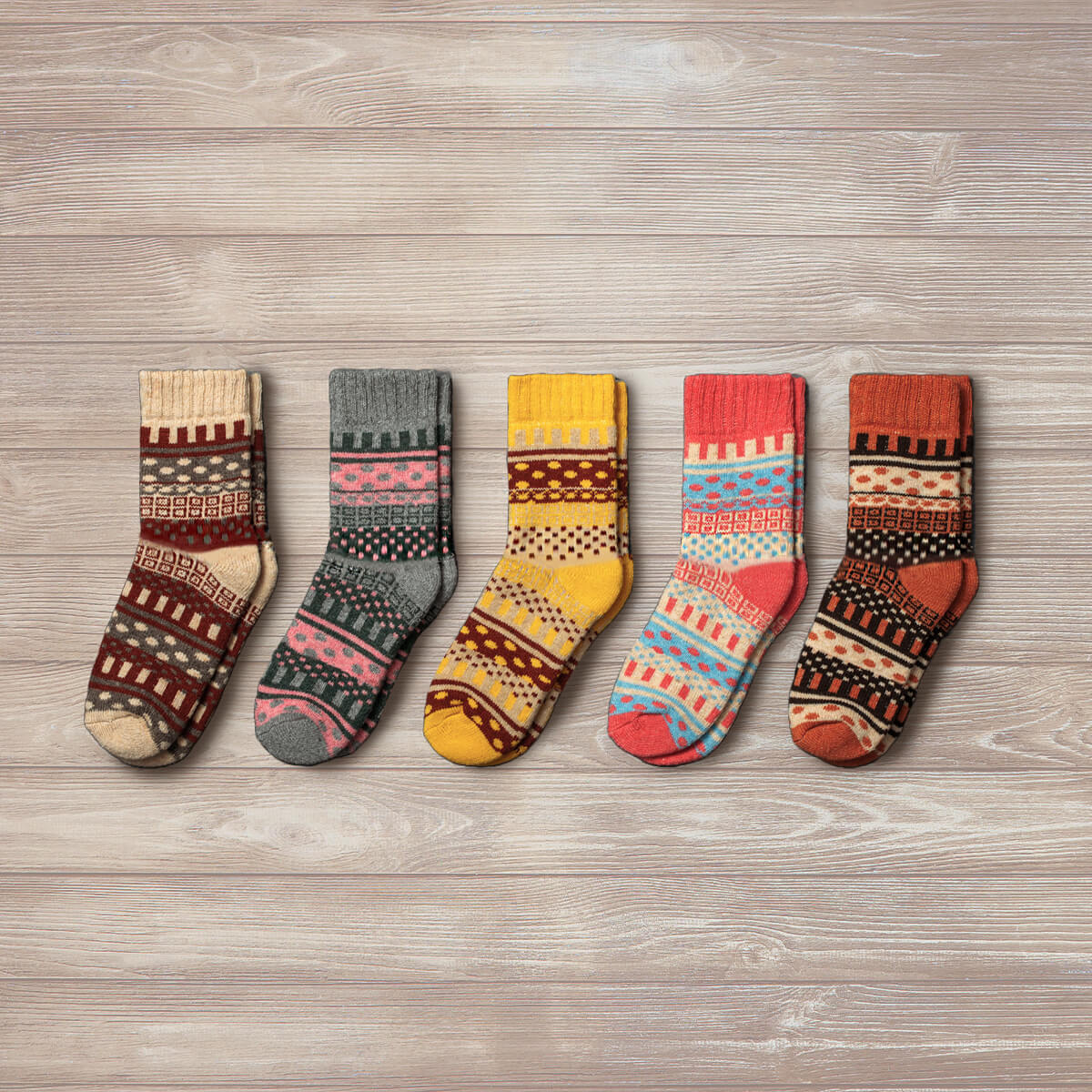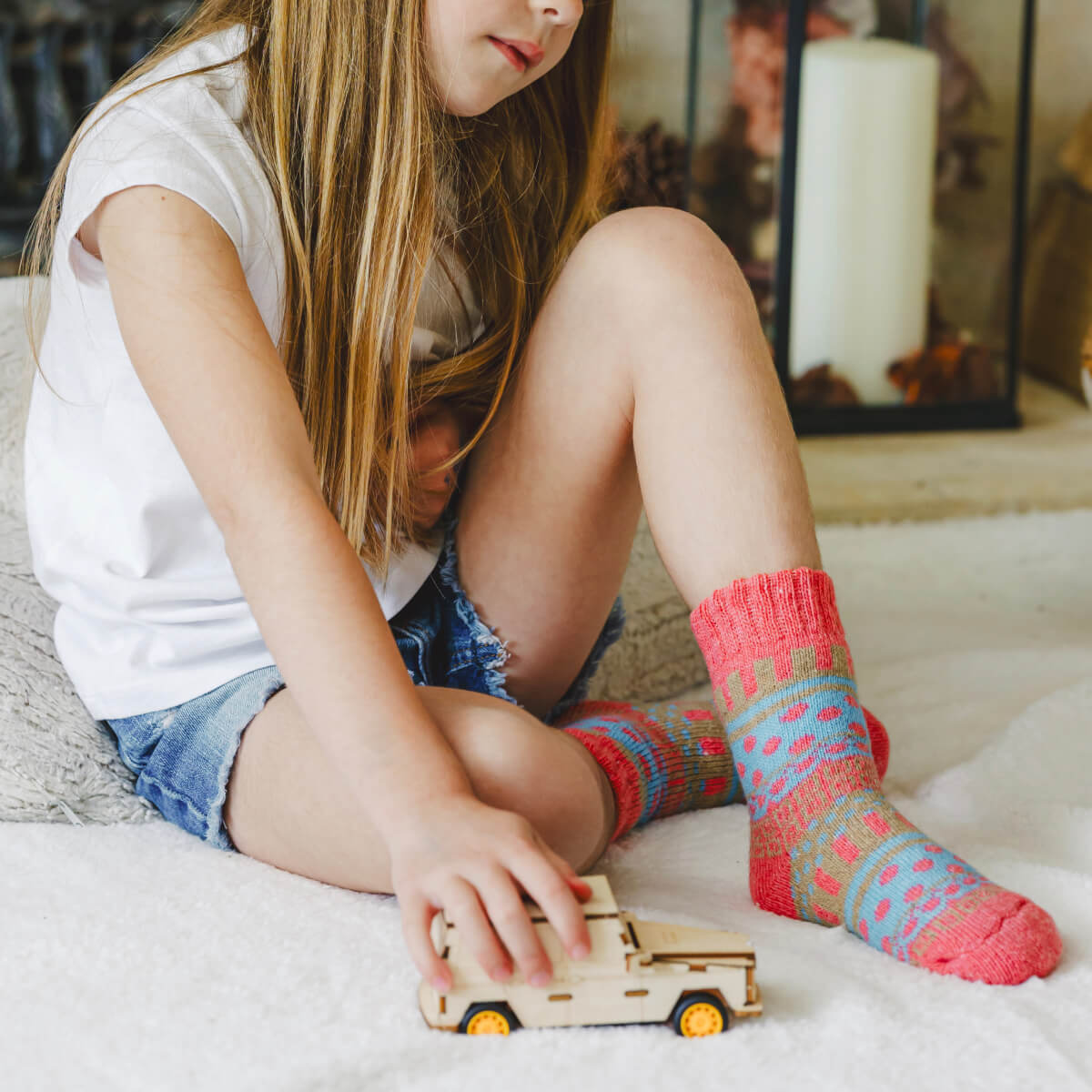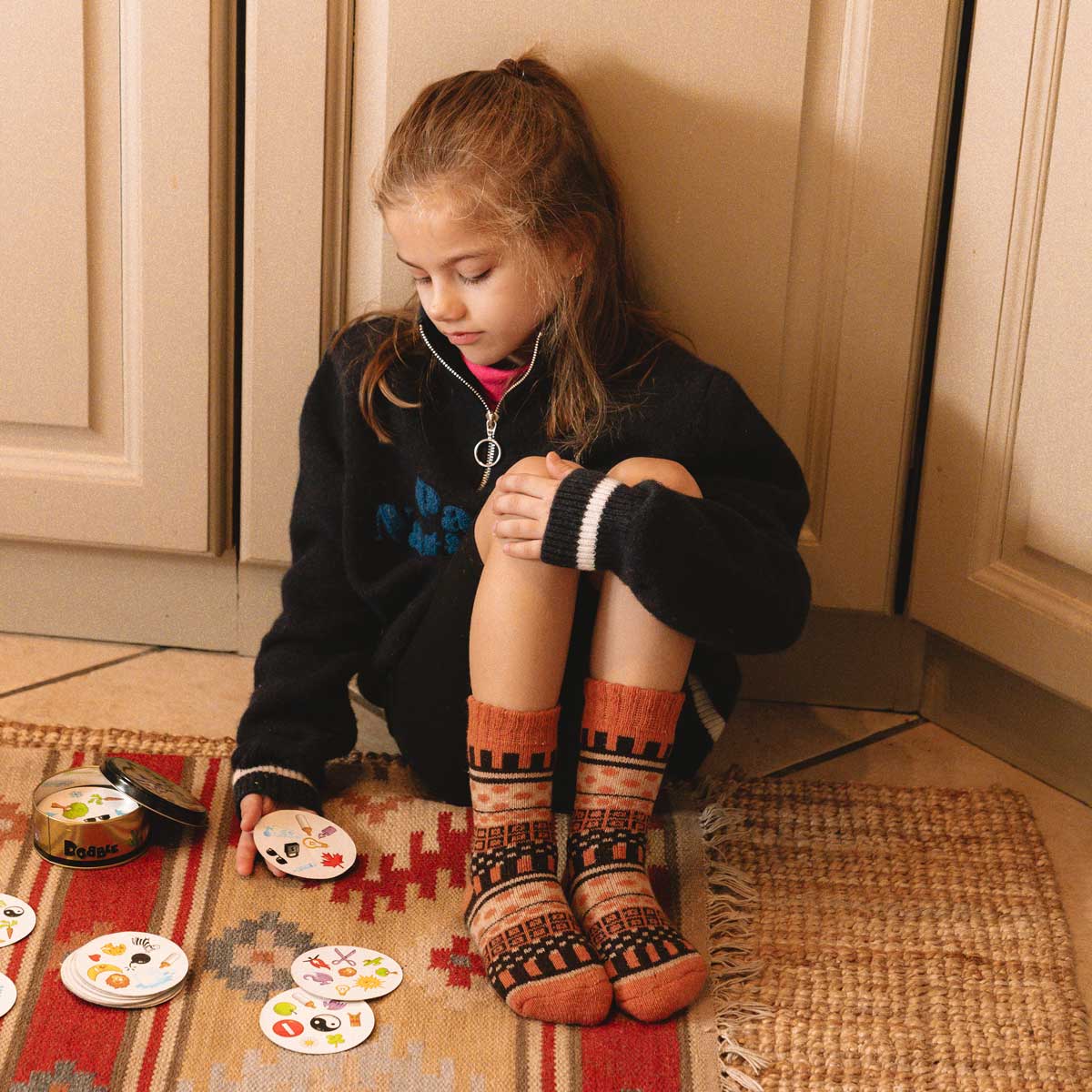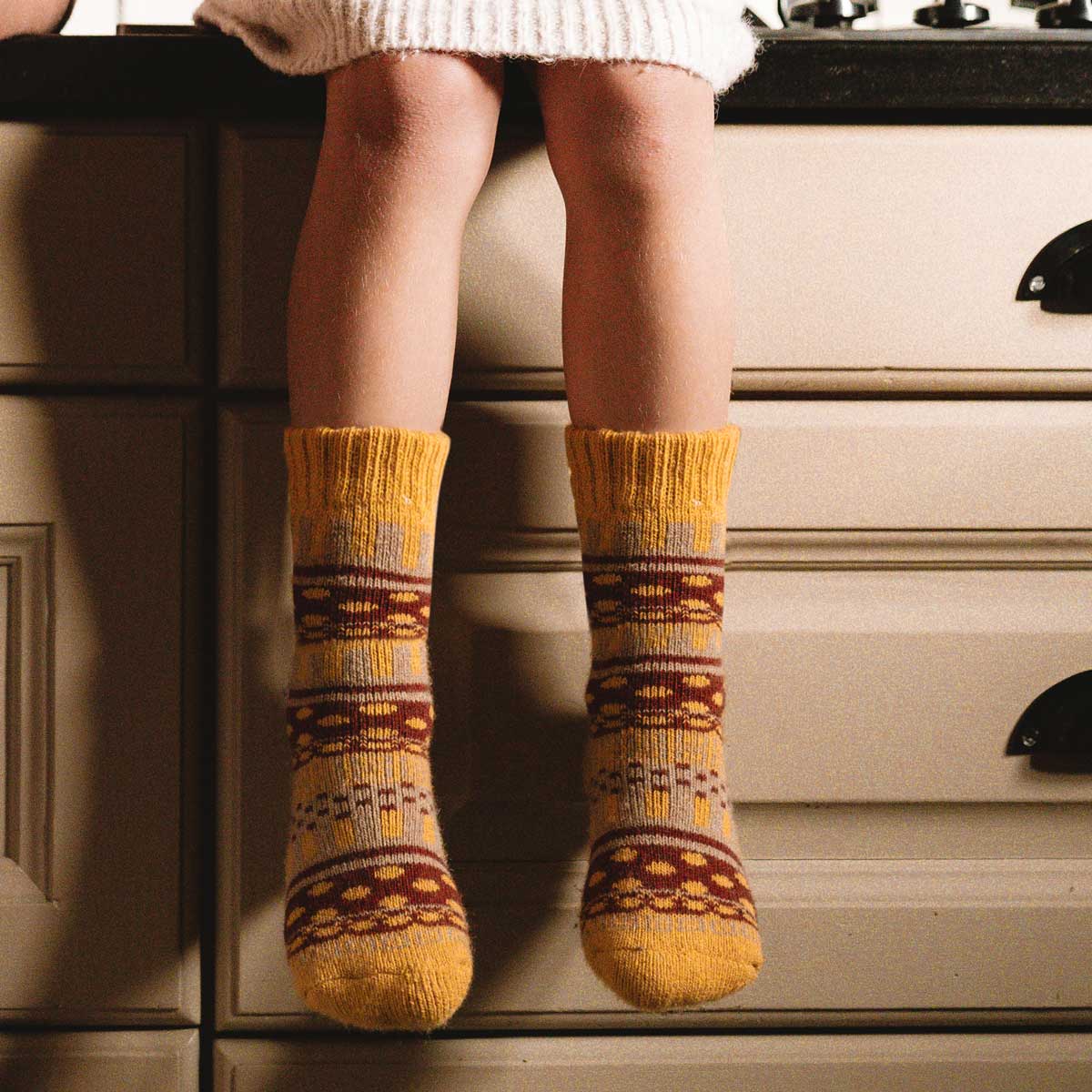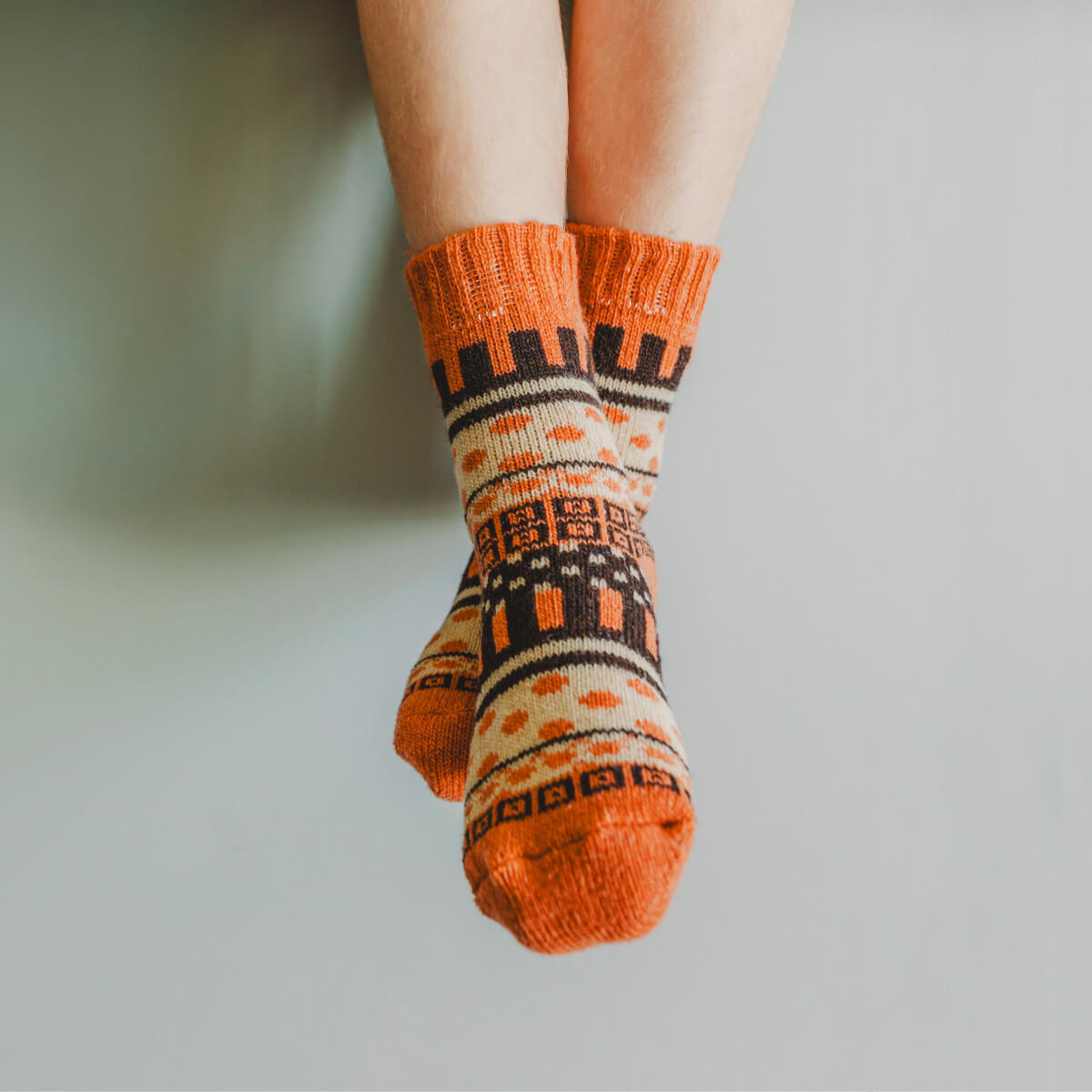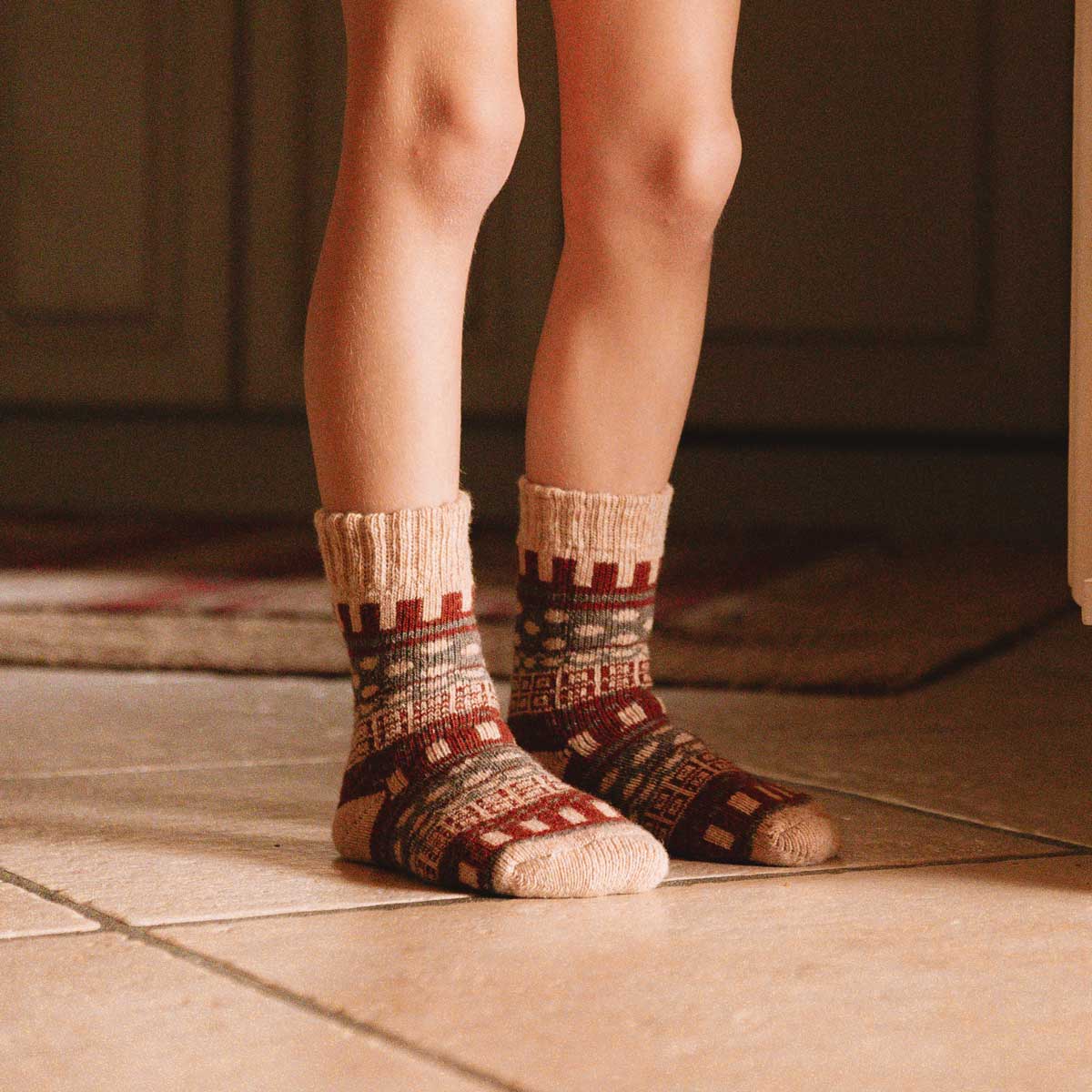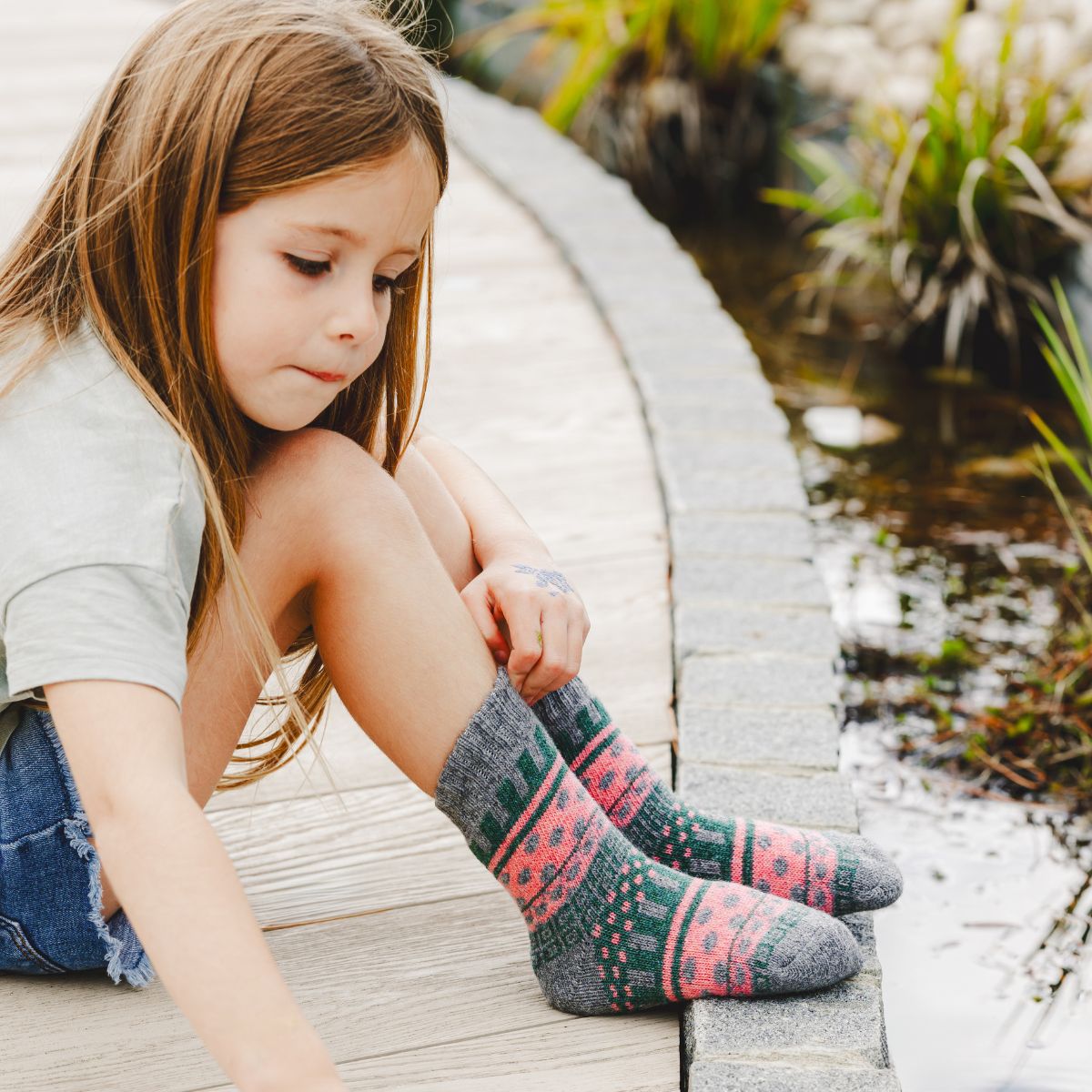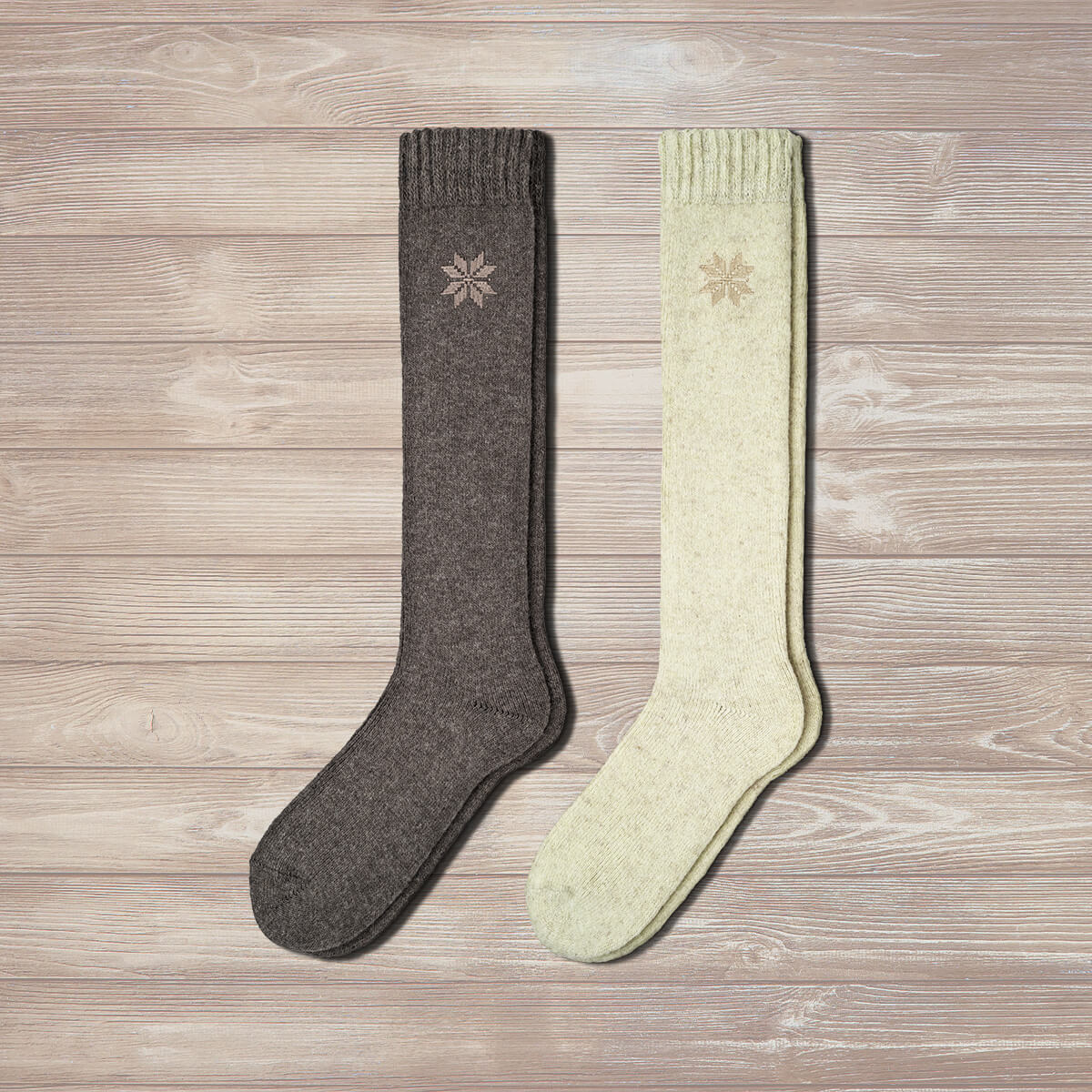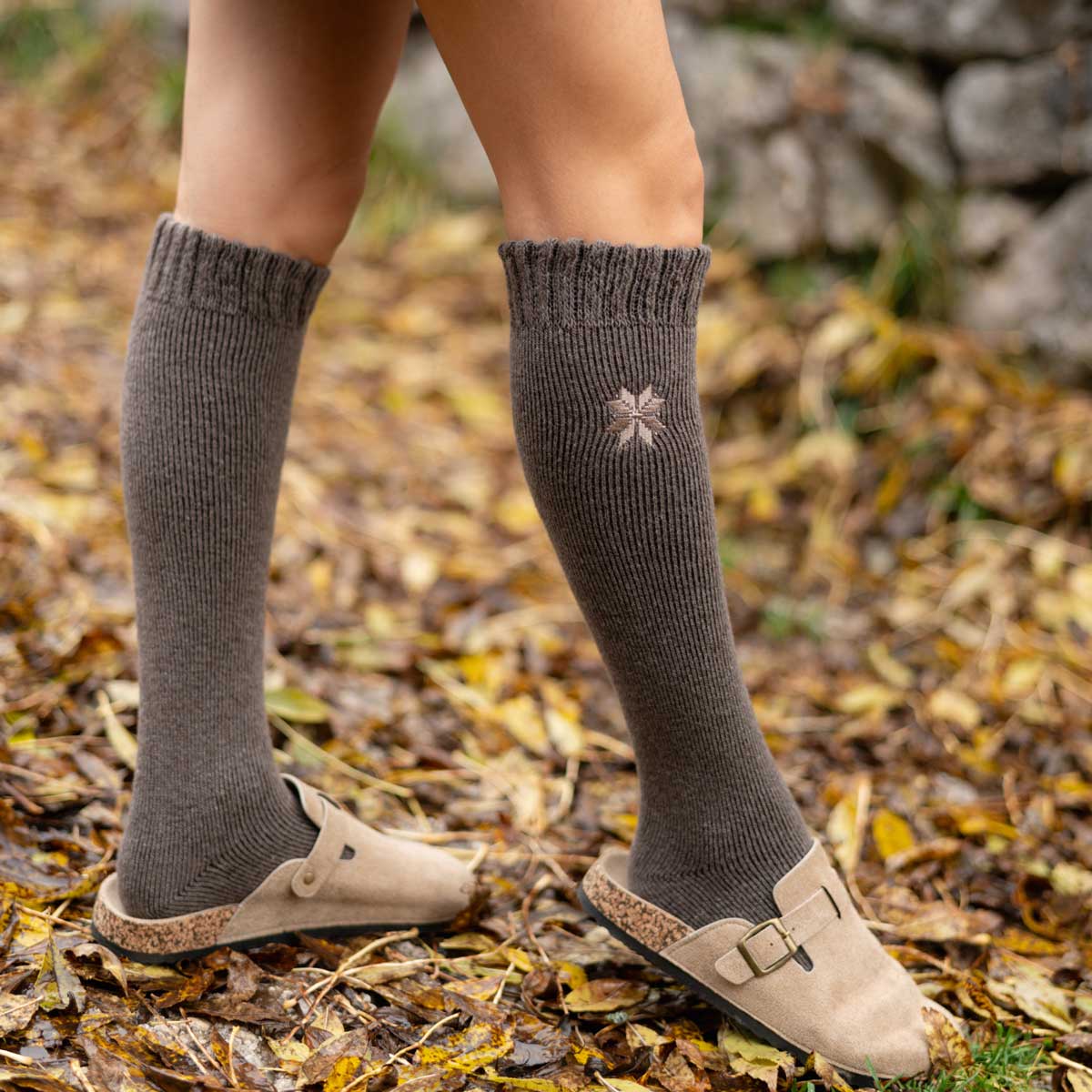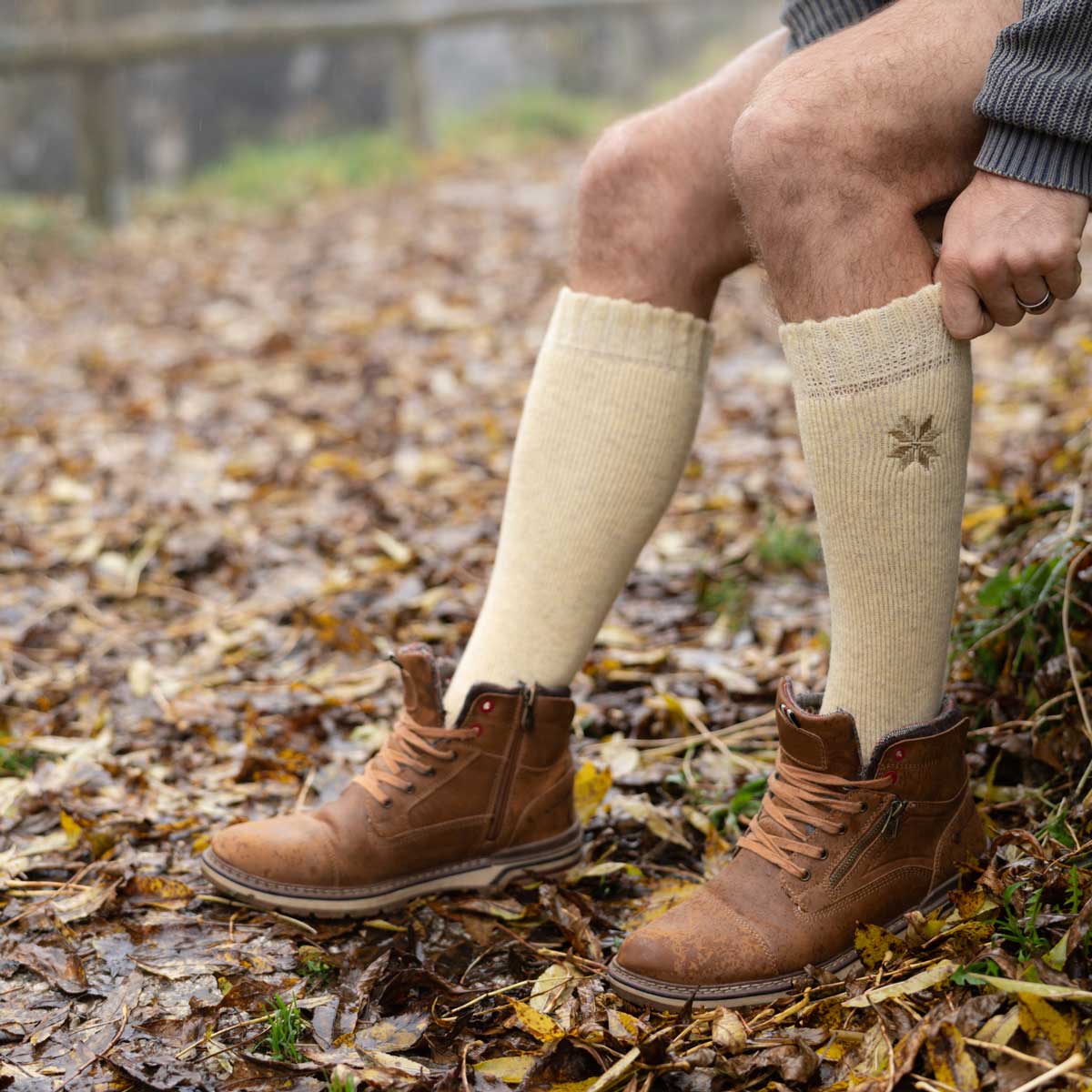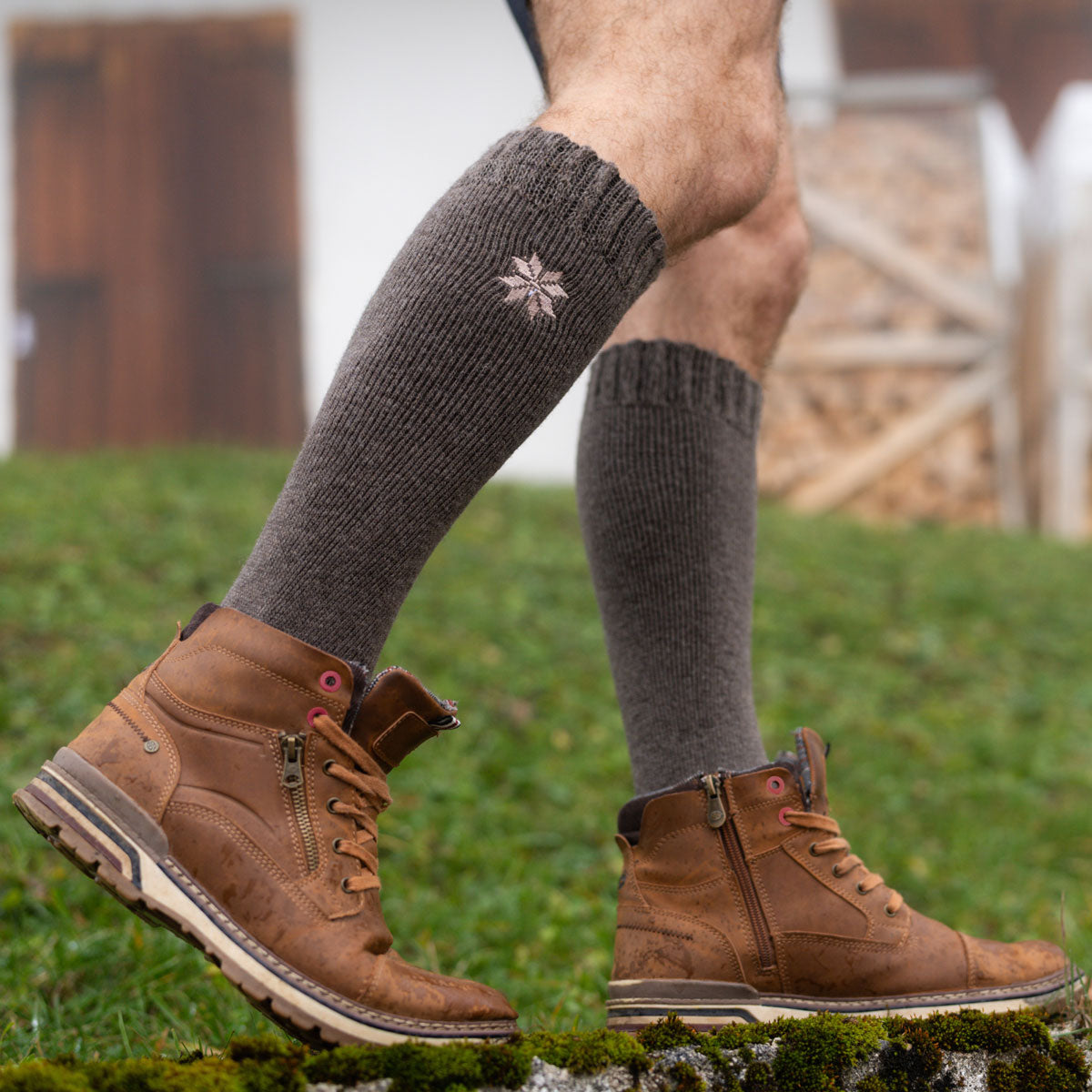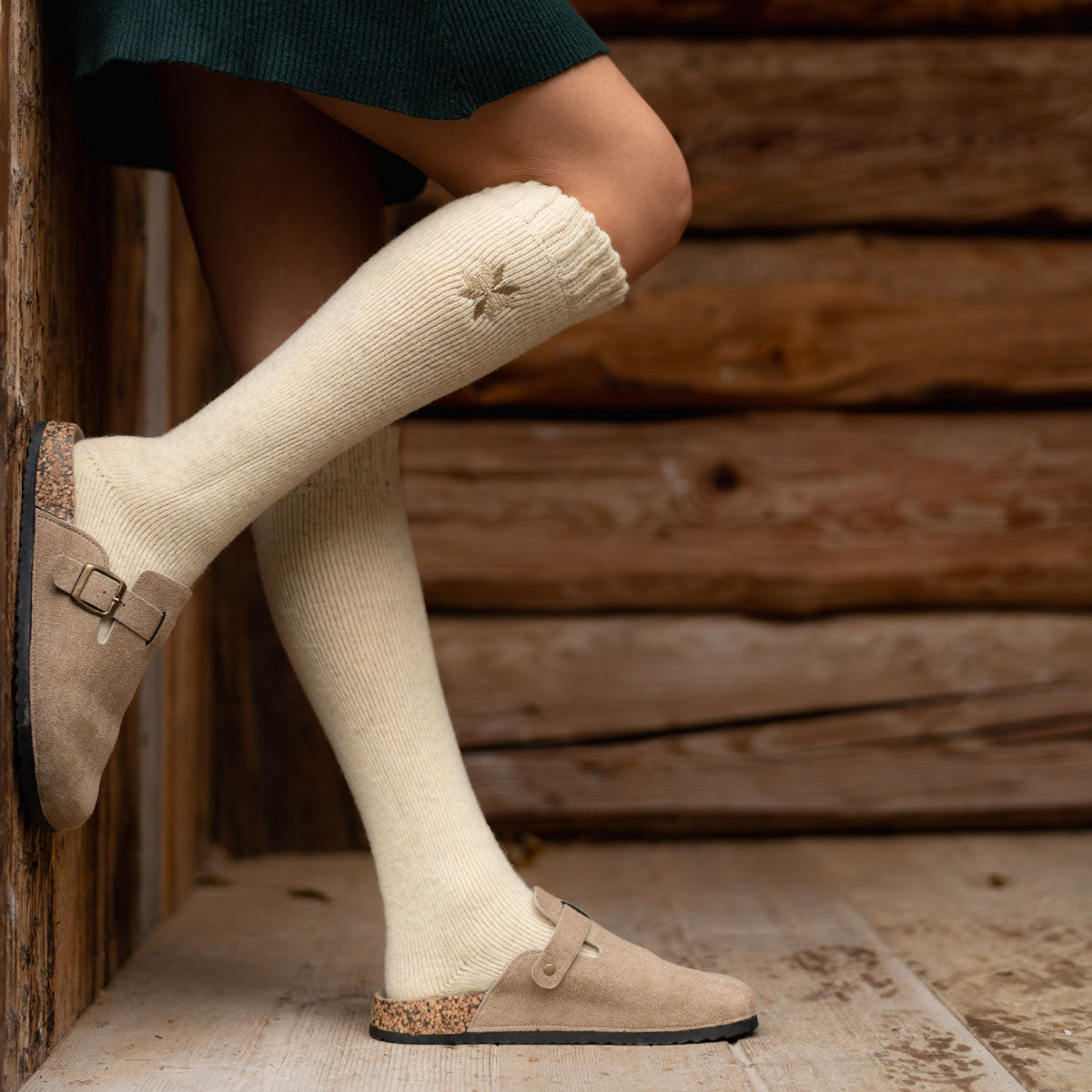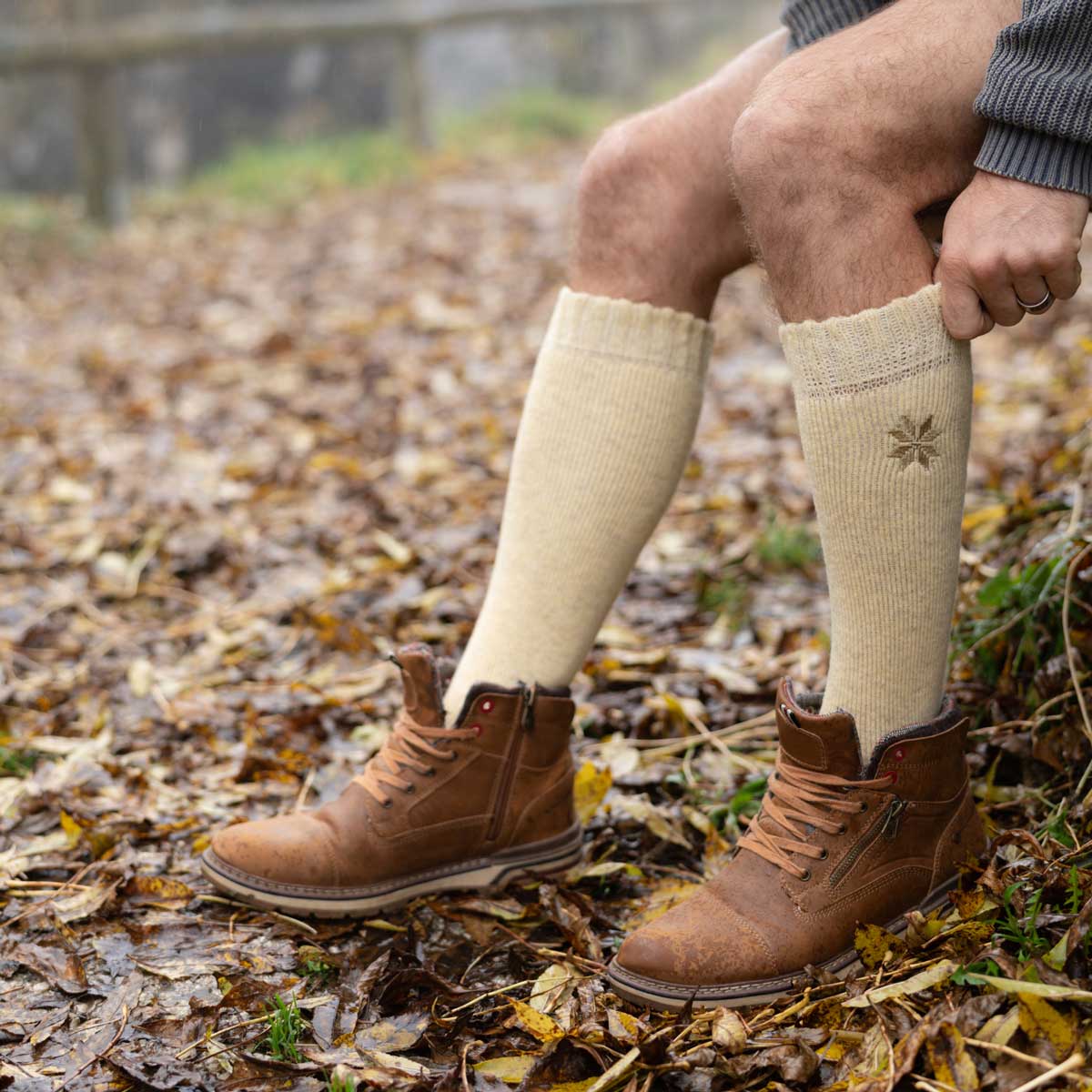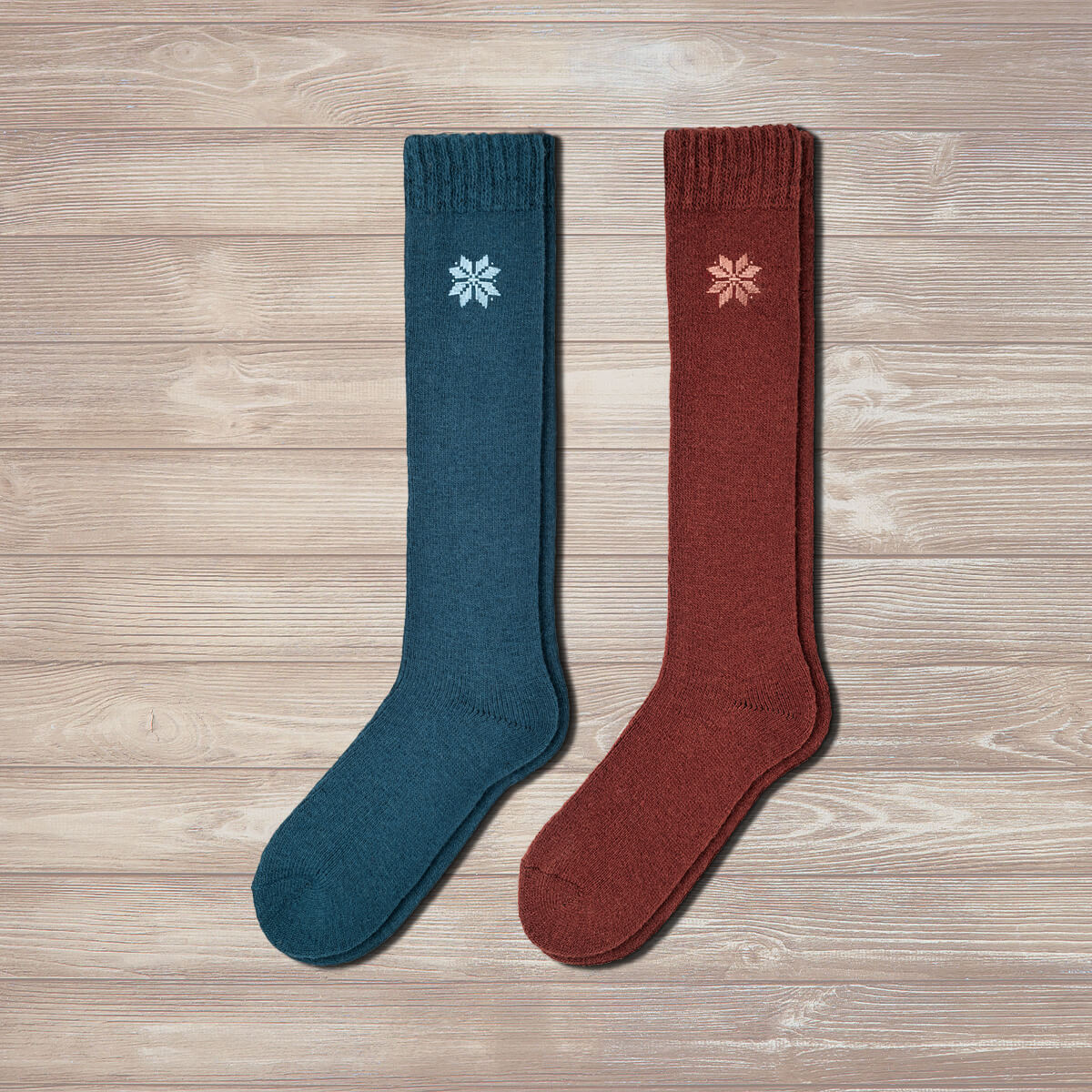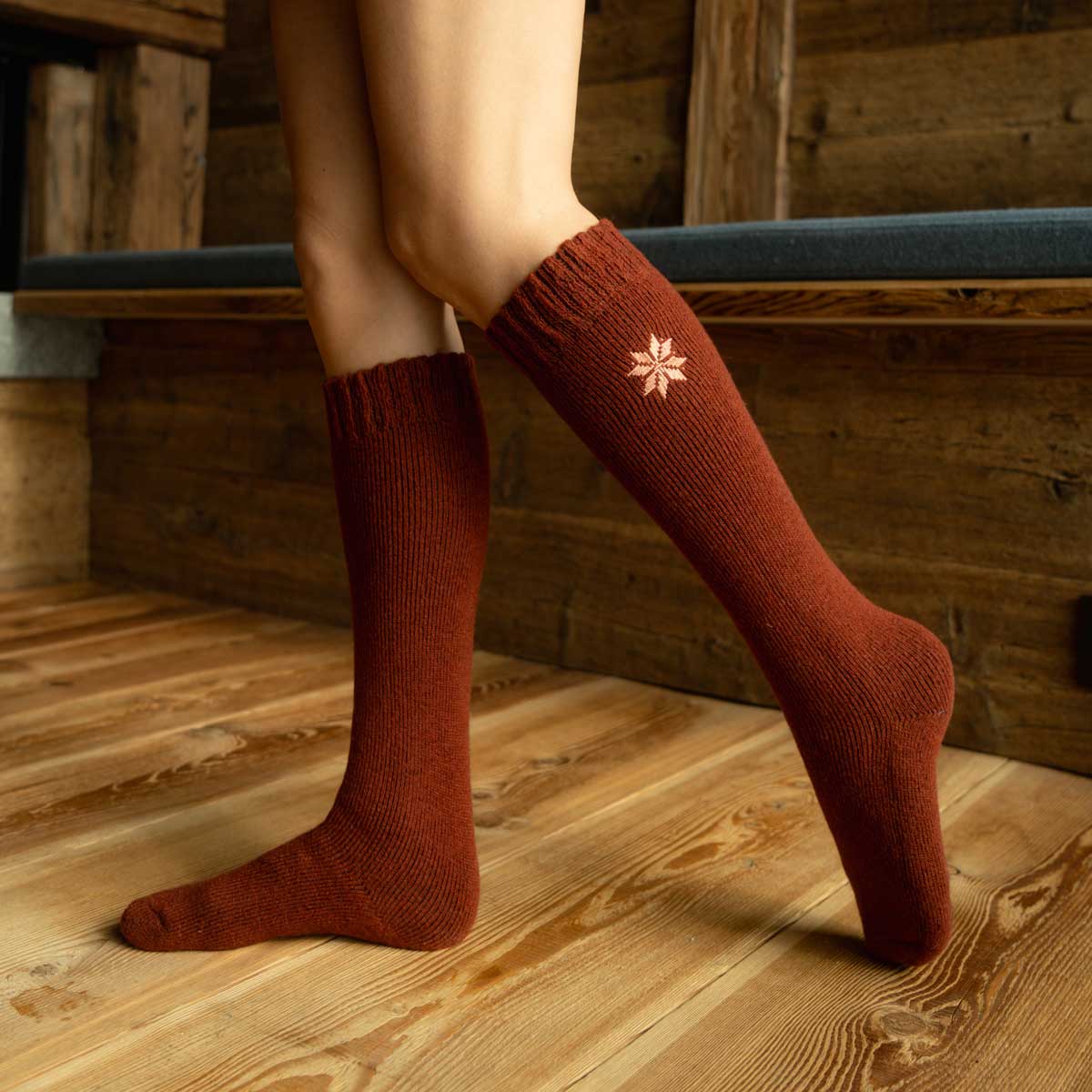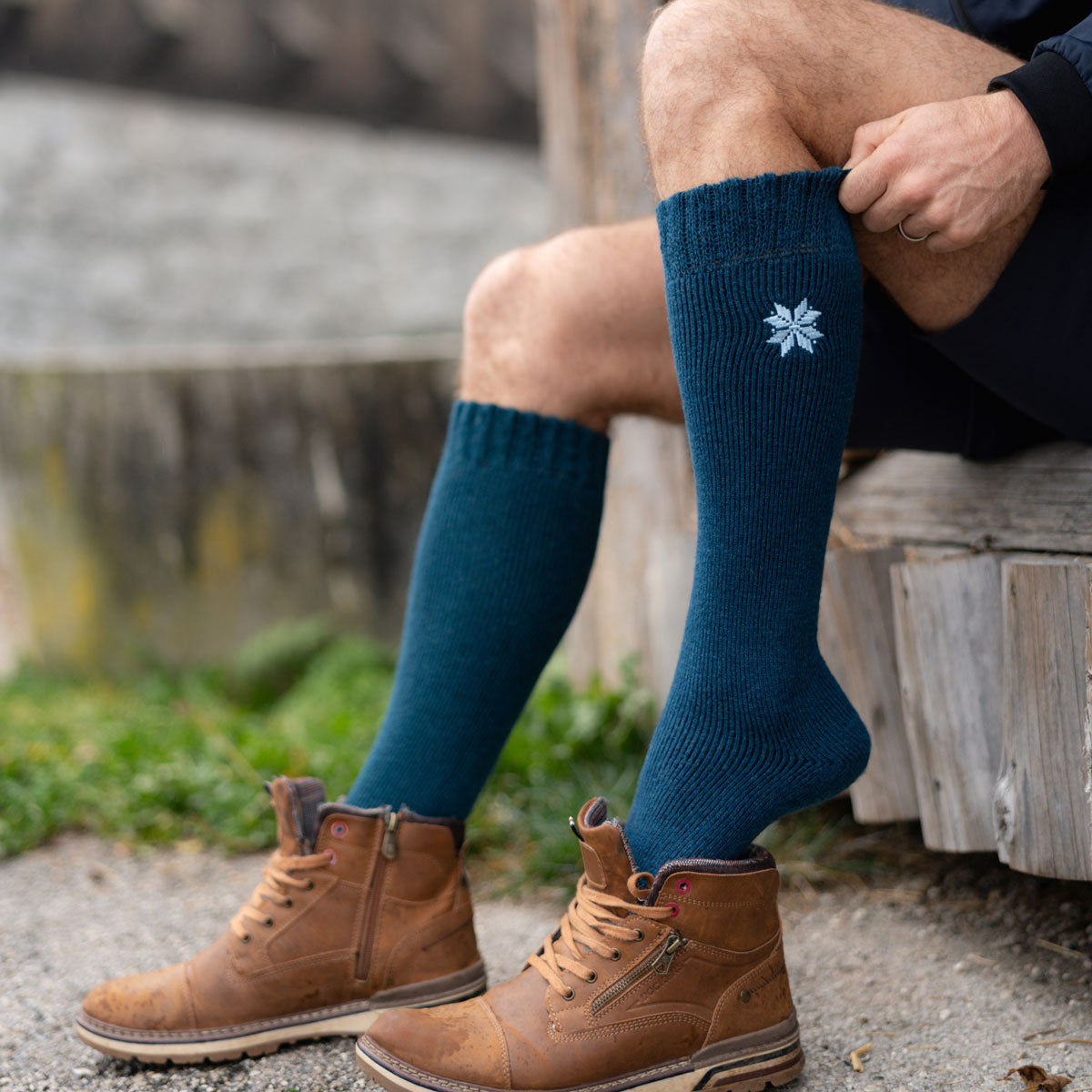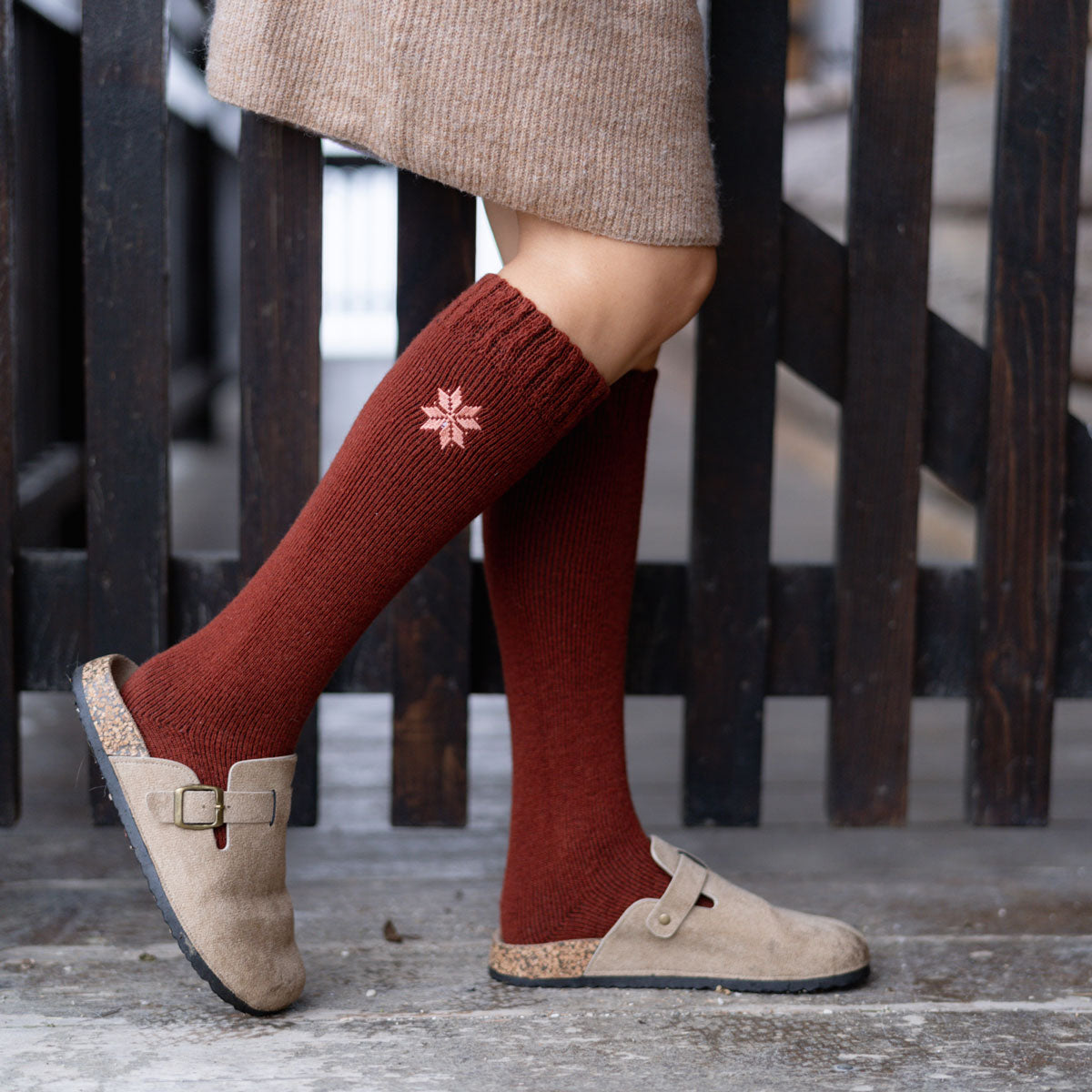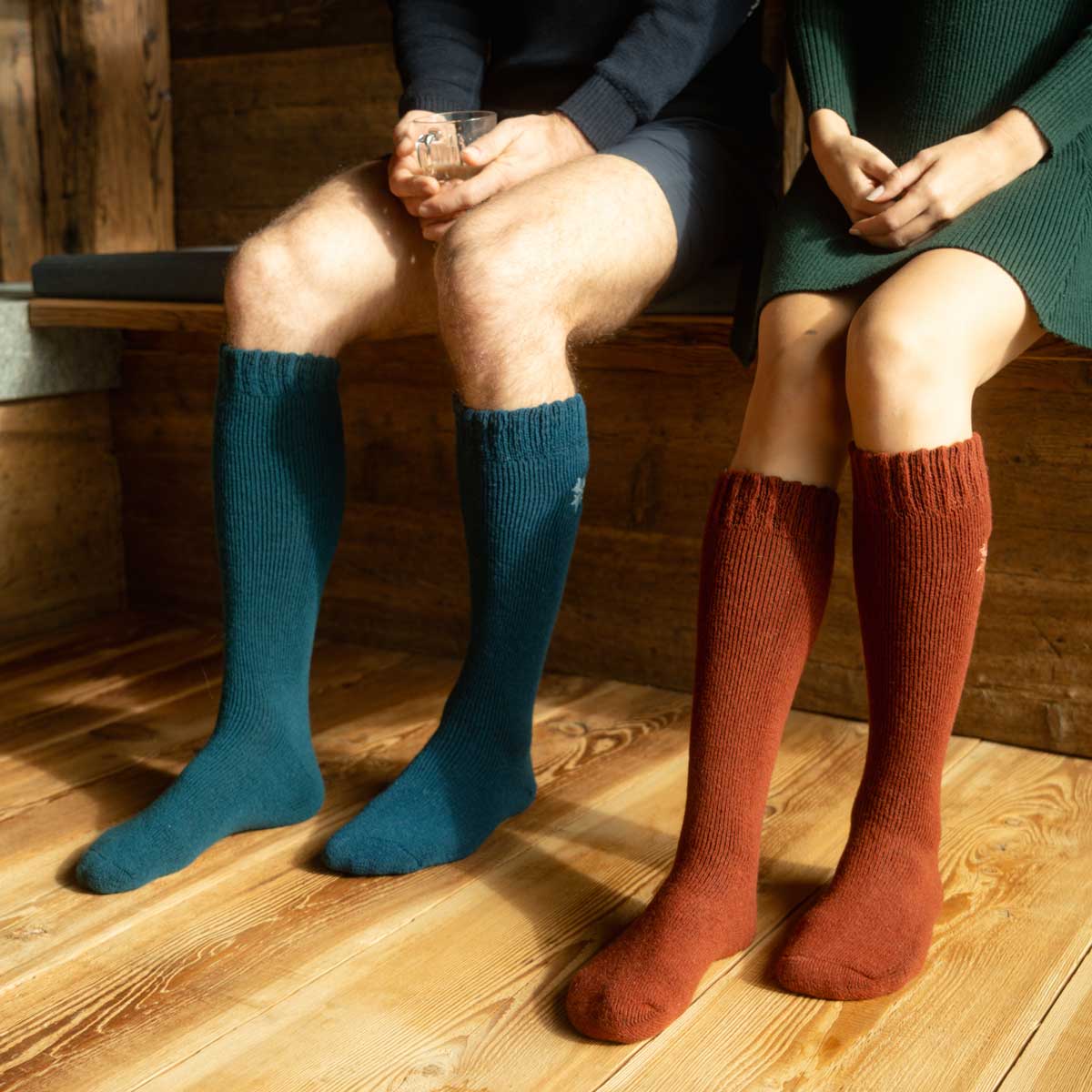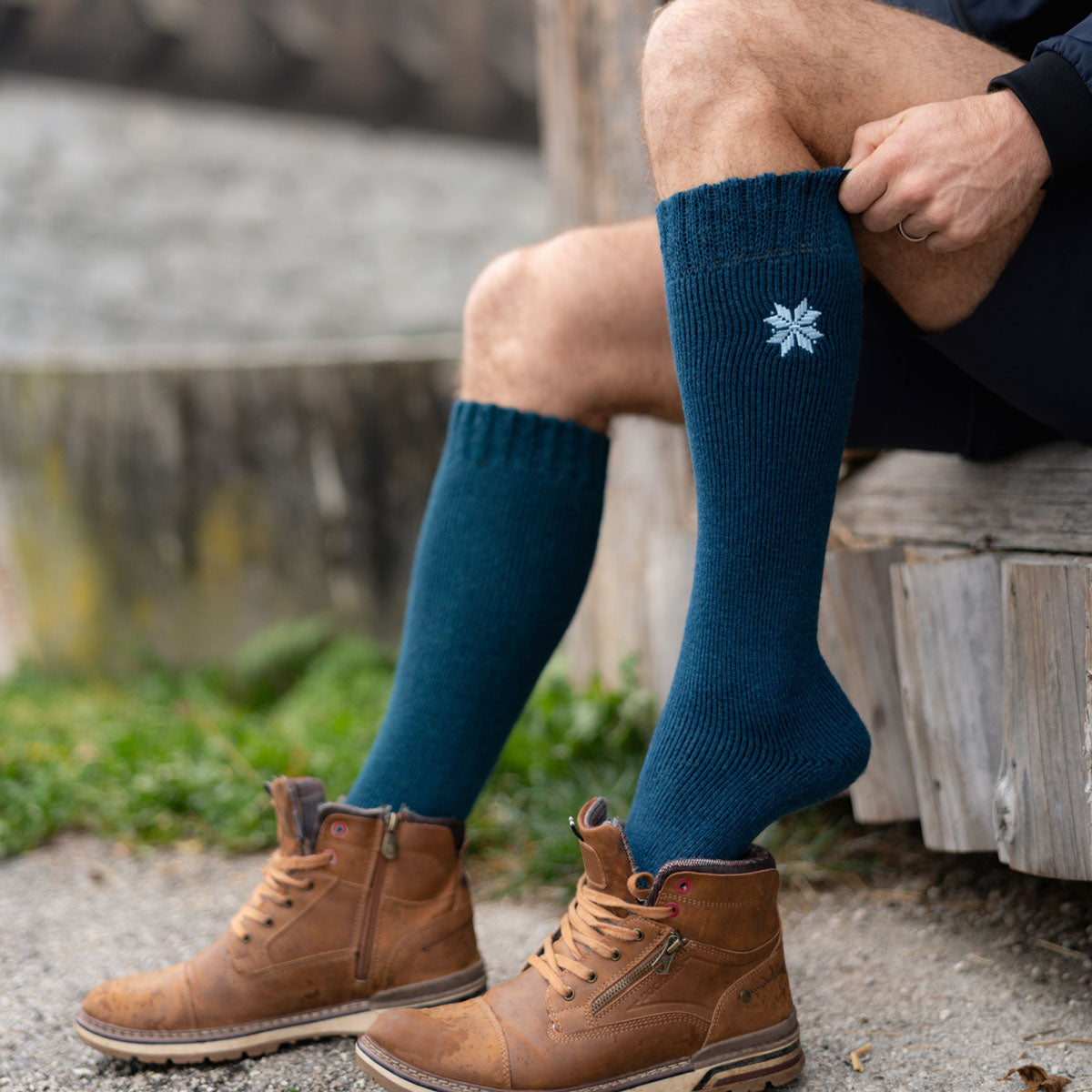Your Cart is Empty

10 Benefits of Wool Socks for Hiking
6 min read
This article explores the top ten benefits of wool socks, particularly for hiking and outdoor activities. Wool socks stand out for their softness, durability, moisture-wicking, temperature regulation, and natural antimicrobial properties. Unlike cotton, wool and especially Merino wool, keeps feet dry, warm, and blister-free even in wet or cold conditions, while maintaining its shape over time. The piece also emphasizes sustainability, as wool is biodegradable and requires less frequent washing, making it eco-friendly and low-maintenance.
It’s no secret that different sock fabrics serve different purposes, and wool socks are no different. Many outdoor enthusiasts often ask "why wool socks for hiking?" and the answer lies in their exceptional performance in challenging conditions. If you’ve never experienced the magic of wearing soft wool socks during cold and humid weather or on long and strenuous hikes, then you’re in for a treat. Here are the ten benefits of wool socks to consider for your next trek.
1. Wool Socks Are Soft
It’s no secret that cotton is by far the softest material for clothing, and that includes activewear such as outdoor socks too. However, wool isn’t far behind on the spectrum. A natural fabric, it is plush and supple, keeping your feet comfortable all day long.
Woolen fibers have a natural crimp and curl to them. This is why sheep look so fluffy and wavy and also why the fabric maintains its softness.
Nevertheless, you should also keep in mind that wool tends to get itchy after some wear. The softest wool socks to combat this issue are the Merino wool ones.
2. Wool Socks Are Durable
Wool is one of themost durable natural fabrics. Its fibers have the ability to bend more than 20,000 times before they break. If you want to do the math, that means that wool is almost seven times more resilient than cotton.
For this reason, wool is a favorite when it comes to designing high-performance socks.
Some of our most durable socks for outdoors come in the BJØRN Set, made from a thick wool blend.
3. Wool Socks Are Lightweight
The fact that wool is durable does not mean you have to sacrifice on comfort. While the fabric indeed has more mass than cotton, it is almost as lightweight as its counterpart. This is why it is recommended even for treks that go on for days on end.
What makes wool so popular from this point of view is its versatility. Due to the springy nature of its fibers, it can be woven into both heavier, winter-appropriate socks as well as lighter pairs for warm weather.
Therefore,socks made from wool are light and can be worn in any weather and for any purpose. They won’t weigh you down.
4. Wool Socks Keep Your Feet Warm

Cotton can offer you a certain degree of insulation. However, as soon as the smallest amount of moisture gets to it, it loses all its protective qualities. This happens regardless of what footwear you choose, which is why it’s not the best fabric choice for high-humidity situations.
This is why experienced hikers and outdoors enthusiasts, in general, go for wool socks instead.
One of their main benefits is that their fibers are woven together completely differently than those in cotton. For this reason, socks made with wool fibers, and Merino wool in particular, have more bulk that traps heat close to your skin.
5. Wool Socks Keep Your Feet Dry
Cotton socks are not an ideal choice in humid environments, as they will absorb liquid and end up sopping wet. This can become a problem not only when it rains outside or when you’re trekking through bodies of water but also when your feet get sweaty.
Here are the most common issues with wearing wet socks for prolonged periods of time:
- blistering
- discomfort
- fungal infections
Wool, on the other hand, can retain up to a third of its weight in moisture before it begins to get soaked.
This is why sheep never get wet when roaming around pastures in rainy weather - their wool keeps them protected against the humidity outside.
For those asking "are wool socks good for hiking?", their moisture-wicking properties make them exceptionally valuable on lengthy trails where dry feet are crucial for comfort and health.
Therefore, durable wool socks are the superior alternative when you want to keep your feet dry on a hike or during intense bouts of physical exercise.
6. Wool Socks Are Sustainable

Natural fabrics have long been considered the most sustainable alternative for clothing. However, as the cost of farming cotton on the environment becomes apparent every day, people are turning to another miracle material for their attire - wool.
Wool has several sustainable attributes, as it is:
- biodegradable
- recyclable
- rapidly renewable
What is more,wool can be grown organically, and shearing it is actually beneficial for the sheep it is collected from. Therefore, sustainability is a major benefit of wool socks to consider when browsing for a new pair.
Sets such as our SVEA are made with a wool and synthetic fiber blend that is both eco-friendly and durable. This will ensure that you don’t have to replace your socks as often, which minimizes your carbon footprint over time.
7. Wool Socks Are Antimicrobial
When considering what are wool socks good for, their natural antimicrobial properties make them ideal for multi-day adventures where laundering isn't an option.
Another great thing about soft wool socks is that they don’t retain any odors due to them having antimicrobial properties. This is made possible by the thin and waxy coating that covers wool fibers.
This coating contains fatty acids, which hinder the development of:
- mildew
- mold
- bacteria
In addition to this, fatty acids repel water, which can also cause mildew and molding beyond the surface. Due to this,woolen clothing items don’t have to be washed regularly. They will keep on smelling fresh even after repeated wear, as opposed to synthetic fibres.
Cotton is also a terrible choice from this point of view, as it will not only get soaked in your foot sweat, but it will also make your feet smell worse throughout the day.
Therefore, if you are in the market for something durable that won’t stink up the place when you’re in the great outdoors enjoying the scenery, wool is the best choice.
8. Wool Socks Do Not Stretch or Sag
Cotton might be the softest fabric for socks, but this comes with a major disadvantage as well - it can stretch and sag over time. This means that cotton socks have a shorter lifespan than their wool counterparts.
Due to how dense and thick wool fibers are, socks made from them maintain their shape admirably for prolonged periods. Simply put,another major benefit of choosing wool socks is that they will stand the test of time. You won’t have to spend money on new ones every year.
9. Wool Socks Prevent Blisters
Understanding why wool socks for hiking are superior becomes clear when you experience their blister prevention capabilities during challenging terrain.
Wool socks may be sturdier than cotton ones, but that does not mean that they are tough on your feet. In fact, the opposite is true.
While cotton is a soft and thin material, this can lead to chafing during longer bouts of physical activities.Wool, on the other hand, creates a bouncy barrier between your foot and shoes, absorbing the friction and padding your skin in the process.
Therefore, wool is the right choice when you’re planning a hike or exercise for more than a couple of hours. It can hold its own for days on end.
10. Wool Socks Are Easy to Maintain
One of the main wool socks benefits when compared to cotton that we mentioned above is that they are completely antimicrobial. While the latter easily retains odor, especially when your feet sweat a lot, the former doesn’t require washing after every single wear.
Here is where the aforementioned fatty acids that coat each fiber of the fabric come into play. Besides not growing mold, mildew, or bacteria, they also repel dirt particles such as dust or lint.
In addition to this,their scaly surface prevents stains and sweat from being absorbed into the material.
This is particularly favorable during longer camping trips in the great outdoors, where you won’t have access to a means of washing your clothes too often.
However, this perk also comes with a downside - socks made from wool need to be washed by hand. The reason for this is that they are easily damaged by:
- friction
- soap
- heat
Thus, investing in the best wool socks is a commitment that pays off in the long run. You need to take more care of them, but they will also take care of you.
Final Thoughts
Theadvantages of wool socks extend beyond comfort to include durability, moisture management, and temperature regulation—all essential factors for successful outdoor activities.

Some of the best wool socks out there are thick, durable, and eco-friendly above all else. And while cotton undoubtedly comes with a clear set of benefits all of its own, the clear advantages wool has over it cannot be denied.
At the end of the day, you should carefully consider what your needs are and act accordingly. And if wool socks are what you require, the Nordic Socks shop has you covered.
FAQs
Are hiking socks necessary?
Yes, hiking socks are necessary if you want to stay comfortable, dry, and blister-free on the trails. Unlike regular socks, hiking socks are specifically designed to provide cushioning, moisture-wicking, and temperature regulation during extended outdoor activities. Nordic Socks offers high-performance options—like the Activity Collection—that blend Merino wool with breathable fibers to support your feet in varying weather conditions.
Get Exclusive offers
Join our email list and get exclusive offers and 10% off on first order.
Recent Articles
-
 Nordic Socks for Every Activity April 10, 2025
Nordic Socks for Every Activity April 10, 2025 -
 What are the best cotton socks? February 18, 2025
What are the best cotton socks? February 18, 2025 -
 The Cultural Inspiration Behind Our Sock Designs December 03, 2024
The Cultural Inspiration Behind Our Sock Designs December 03, 2024 -
 What Should You Look For When Buying Hiking Socks? November 12, 2024
What Should You Look For When Buying Hiking Socks? November 12, 2024 -
 Guide to Keeping Your Feet Toasty: The Best Socks for Cold Weather October 22, 2024
Guide to Keeping Your Feet Toasty: The Best Socks for Cold Weather October 22, 2024
Related Products
Enjoying this content?
Sign up to get notification about new articles, special offers and new products.
Knee High Socks
NEWS & UPDATES
Get the newsletter to receive direct information about offers and new products.
Where are we shipping to?
Purchase from your country’s website.
It’s the fastest way to pamper your feet with comfy socks.
other countries
English














